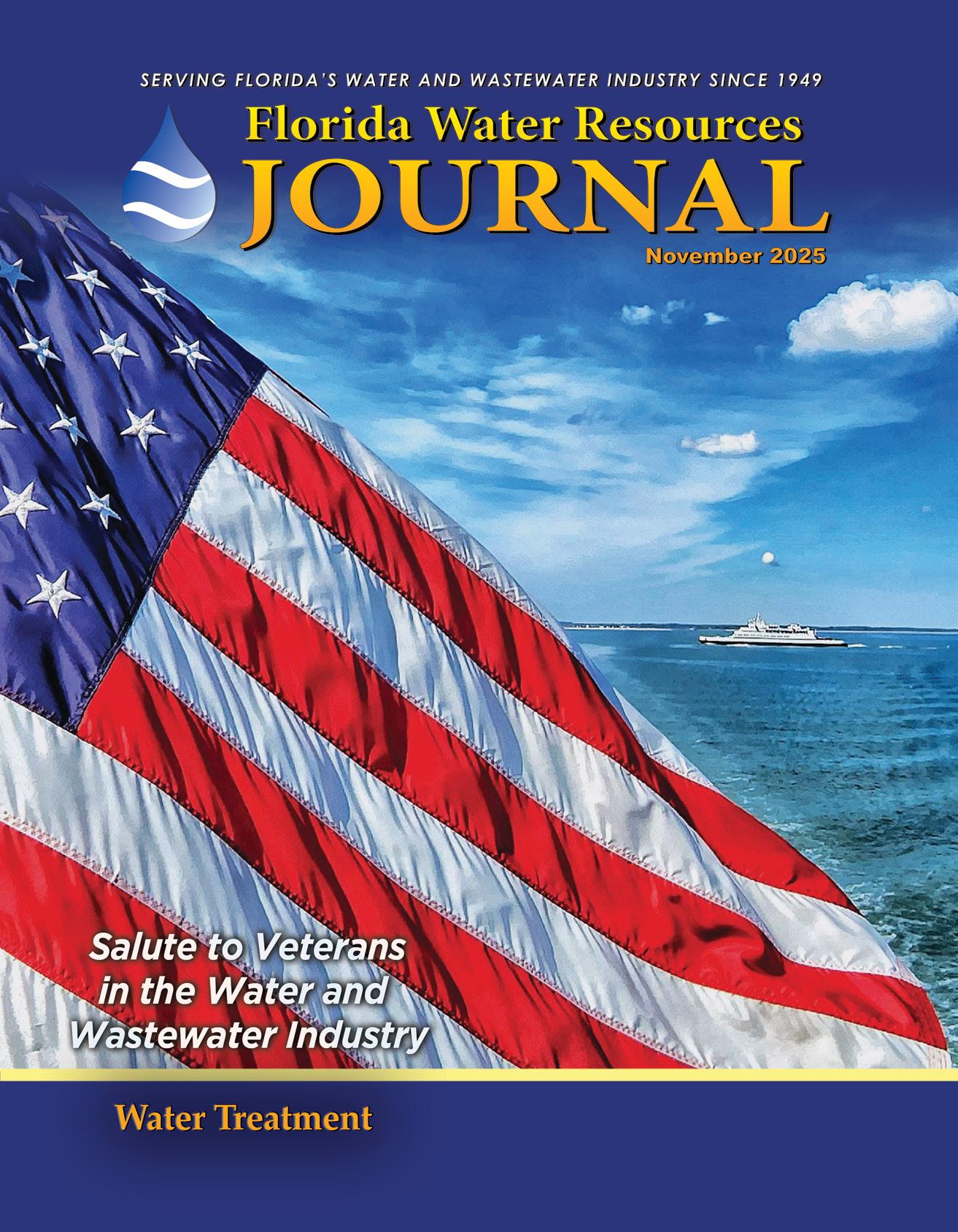

Static Mixing Technology with proven benefits
Through experience, innovation and inspiration Statiflo continues to strengthen its reputation as the world leaders in the design and manufacture of static mixers, channel mixers, gas dispersion systems and associated technologies.
Statiflo Motionless Mixers offer many key benefits for chemical dosing applications. They are efficient and economical, delivering precise, predetermined results every time.
Key benefits include:
• Highly efficient mixing meaning a low pressure drop and a short overall length
• Continuous performance over a wide flow range
• Reduced chemical consumption
• Available in all sizes and materials
• Custom designed for each application
• CFD verification is available
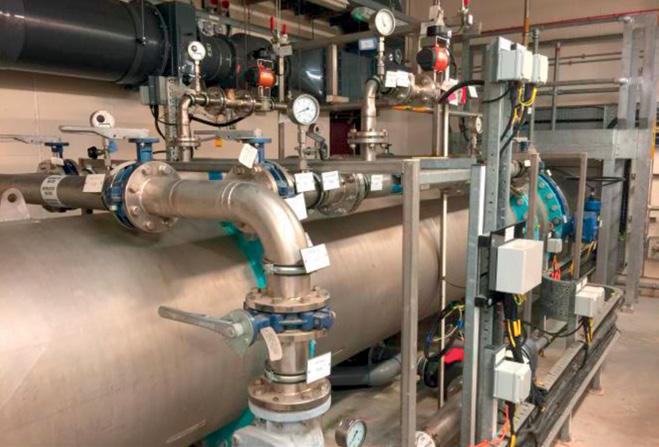


Editor’s Office and Advertiser Information:
Florida Water Resources Journal
1402 Emerald Lakes Drive
Clermont, FL 34711
Phone: 352-241-6006
Editorial, editor@fwrj.com
Display and Classified Advertising, ads@fwrj.com
Business Office: 1402 Emerald Lakes Drive, Clermont, FL 34711
Web: www.fwrj.com
General Manager: Michael Delaney
Editor: Rick Harmon
Graphic Design Manager: Patrick Delaney
Mailing Coordinator: Buena Vista Publishing
Published by BUENA VISTA PUBLISHING for Florida Water Resources Journal Inc.
President: Richard Anderson (FSAWWA) Peace River Manasota Regional Water Supply Authority
Vice President: Joe Paterniti (FWEA) Clay County Utility Authority
Treasurer: Rim Bishop (FWPCOA) Seacoast Utility Authority
Secretary: Rim Bishop (FWPCOA) Seacoast Utility Authority
Moving?
The Post Office will not forward your magazine. Do not count on getting the Journal unless you notify us directly of address changes by the 15th of the month preceding the month of issue. Please do not telephone address changes. Email changes to changes@fwrj.com or mail to Florida Water Resources Journal, 1402 Emerald Lakes Drive, Clermont, FL 34711
Membership Questions
FSAWWA: Casey Cumiskey – 407-979-4806 or Casey@fsawwa.org
FWEA: Laura Cooley, 407-574-3318, admin@fwea.org
FWPCOA: Darin Bishop – 561-840-0340
Training Questions
FSAWWA: Donna Metherall – 407-979-4805 or Donna@fsawwa.org
FWPCOA: Shirley Reaves – 321-383-9690
For Other Information
FDEP Operator Certification: Ron McCulley – 850-245-7500
FSAWWA: Kim Kowalski – (407) 979-4814
Florida Water Resources Conference: 267-884-6292
FWPCOA Operators Helping Operators: John Lang – 772-559-0722, oho@fwpcoa.org
FWEA: Laura Cooley, 407-574-3318, admin@fwea.org
Websites
Florida Water Resources Journal: www.fwrj.com
FWPCOA: www.fwpcoa.org
FSAWWA: www.fsawwa.org
FWEA: www.fwea.org and www.fweauc.org
Florida Water Resources Conference: www.fwrc.org

Salute to Veterans in the Water and Wastewater Industry
18 Happy Veterans Day!
18 EPA Guide: Introduction to Military Occupational Specialties for the Water Workforce
22 Memorandum of Understanding
23 Reader Profile: Veterans Edition—Arthur Bides
24 Honor Walk at Veterans Memorial Park
25 FSAWWA Veterans Service Recognition
News and Features
4 Water-AI Nexus Center of Excellence Launches
Drifting Isn’t a Strategy: 8 Steps to Stay on Course in Turbulent Times— Maartje van Krieken
2026-2027 AWWA Scholarships Now Open!
Technical Articles
Streamlining Per- and Polyfluoroalkyl Substances Treatment Process Selections— Phil Locke and Meg Simms
40 Unique Findings of Piloting With Ozone, Granular Activated Carbon, and Ion Exchange in Central Florida—Zach Protas, Jon Bundy, Kathy Traexler, and Austin Humphreys
Education
and Training
CEU Challenge
Fall Conference Schedule of Events
Fall Conference Registration Form
Fall Conference Poker Night, Happy Hour, and Topgolf
FSAWWA Fall Conference Incoming Chair’s Reception and BBQ Challenge
Florida Water Resources Conference
55 FWPCOA Training Calendar
Columns
26 C Factor—Kevin G. Shropshire
30 FWEA Focus—Joan Fernandez
38 Let’s Talk Safety: Quick Equipment Checks for Workers
39 Test Yourself—Charles Lee Martin Jr.
46 FWEA Chapter Corner: Spread the Word!
2026 Florida Water Environment Association
Video Contest—Samar Al Mashrafi and Debbie Sponsler
Speaking Out—Lisa Wilson-Davis
Departments
Classifieds 58 Display Advertiser Index

ON THE COVER: The American flag is a powerful symbol of freedom, democracy, and patriotism, and it represents the unity and values of the American people. It serves as a reminder of the sacrifices made for freedom and embodies the nation’s history and ongoing evolution. The colors of the flag have symbolic meanings: red signifies hardiness and valor, white represents purity and innocence, and blue symbolizes vigilance, perseverance, and justice. The salute to veterans begins on page 18. (photo: Google Images)
Water-AI Nexus Center of Excellence Launches
First-of-its-kind initiative to harness AI to solve critical water challenges
The Water Environment Federation (WEF), Amazon, The Water Center at the University of Pennsylvania, and Leading Utilities of the World announce the creation of the Water-AI Nexus™ Center of Excellence, a groundbreaking collaboration that will develop sustainable water practices for artificial intelligence (AI) infrastructure, while also using AI to solve global water challenges. This knowledge hub at the confluence of water and AI brings together water utilities, technology companies, and researchers to address the complex relationship between digital infrastructure and water sustainability.
The Water-AI Nexus was unveiled during Climate Week NYC, the largest annual climate event in the United States, and focused on two critical missions:
1. Water for AI: Ensuring AI infrastructure uses water as efficiently as possible
2. AI for Water: Leveraging AI capabilities to solve pressing water scarcity and management challenges
The center was also recently featured at the Water Environment Federation Technical
Exhibition and Conference (WEFTEC), held in Chicago in early fall, with three full days of dedicated content, a media panel with the founding leaders, panel discussions with industry experts, and networking opportunities for water and technology professionals.
“Water utilities worldwide are facing unprecedented challenges from climate change and aging infrastructure, while simultaneously working to serve communities that depend on reliable, affordable water services,” said Howard Carter, president of WEF. “The center will accelerate innovation by connecting water professionals with AI experts to develop solutions that benefit both sectors, as well as the communities they serve.”
Key Initiatives of the Water-AI Nexus
The key initiatives of the center include:
Framework Development
The center establishes standards and best practices for water use that can be shared across the data processing industry.
Insight Report
The release of the report, “Principles for Sustainable Water Use by Data Centers,” provides a roadmap for data center operators to minimize water impacts, while maximizing technological advancement. The report outlines four core principles:
S Strategic design and location
S Optimizing operational efficiency
S Using sustainable water sources
S Pursuing water replenishment to deliver water back to communities
Knowledge Sharing
The center will disseminate case studies and research findings through publications and events.
Cross-Sector Collaboration
The center unites water utilities, AI developers, researchers, and government officials. “We believe responsible innovation means both addressing our water footprint and using technology to solve global water challenges,” said Beau Schilz, water principal at Amazon
Continued on page 6

(photo: FWRJ staff)

Continued from page 4
Web Services. “At Amazon, we strive to reduce water use in our operations, which includes logistics sites, such as fulfilment centers, as well as in our corporate offices and grocery stores. We’re also committed to returning more water to communities than we use across our data centers by 2039. Being a founding leader of the center will help not only Amazon in its goals, but others as well, as we aim to collectively transform water management worldwide.”
The center brings together expertise across water, academic, and utility sectors to ensure AI benefits and reduces stress on water resources. By maximizing efficiency, eliminating unnecessary water use, and investing in community-tailored solutions, the sponsors can collectively ensure that technological advancement and environmental stewardship will—and must—move forward together.
“The Water Center at the University of Pennsylvania is proud to bring academic expertise to this critical collaboration,” said Howard Neukrug, its executive director. “By connecting research, industry practice, and policy development, we can accelerate innovations that address water scarcity, while enabling responsible technological advancement.”
Christopher Gasson, publisher of Global Water Intelligence and founder of Leading Utilities of the World, added, “The intersection of water management and AI is a turning point for the sector—both a critical challenge and unprecedented opportunity. The center will be a vital platform where utilities can directly collaborate with technology innovators to ensure water sustainability isn’t compromised by digital growth.”
Sponsors
Amazon
Amazon is guided by four principles: customer obsession rather than competitor
focus, passion for invention, commitment to operational excellence, and long-term thinking. Amazon strives to be Earth’s most customer-centric company, best employer, and safest place to work. For more information, visit www.amazon.com.
The Water Center at Penn
The Water Center at Penn is a communityfocused research center working to find integrated solutions to the multiple challenges facing the world’s water systems and their watersheds. It strives to be a trusted, reliable partner with work that accelerates water equity by connecting, convening, and collaborating across the sector. Its research approach is centered around working alongside communities, bringing their knowledge and expertise to the solutions addressing their water challenges, sharing power and responsibility, and encouraging communities to take the lead in determining priorities, questions to be asked, and the approaches to answering those questions. It also shares resources, education, training, and applied knowledge to support community goals. For more information, visit www.watercenter.sas.upenn.edu.
Leading Utilities of the World
Leading Utilities of the World is a network of the world’s most forward-thinking water and wastewater utilities, as defined by the network’s 14 distinct innovation areas. Its members represent the gold standard of utility innovation and performance throughout the developed world’s water sector. The organization is an initiative of the Global Water Leaders Group, a not-forprofit group helping to tell a better story for water worldwide by recognizing achievement, providing a network for sharing ideas, and inspiring others to improve. Primarily a CEOlevel organization, it’s funded by Jacobs, its foundation partner, and Grundfos, a corporate

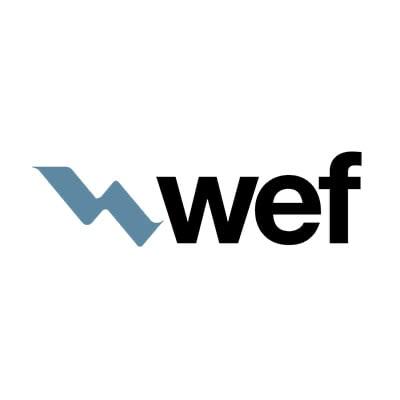
member, and collaborates with WEF, its association partner. There are no membership fees for its utilities, which meet three times a year at major water conferences around the world. More information is available at www. leadingutilities.org.
WEF
A not-for-profit, nonpartisan organization, WEF provides water professionals with the latest in education and training. It’s leading the transformation to a circular water economy: reducing waste, recovering resources, and regenerating ecosystems. Founded in 1928, WEF’s mission is to inspire its 31,000 members and 75 affiliated member organizations—and the entire water community—in pursuit of human and environmental wellbeing. Its premiere event, WEFTEC, is the largest annual water quality exhibition in North America, attracting a diverse, global audience. More than 20,000 registrants and 1,000 exhibitors convene there to experience innovative solutions and gain expert insights that positively impact the future of water. For more information, visit www.wef.org.
Organizations across the water and technology sectors are invited to engage in this collaborative effort at water-ai-nexus. org—the central hub for the Water-AI Nexus community.
Media Contacts
Alyson Moses, managing director, marketing and communications, WEF 954-562-7023 amoses@wef.org
David Ward, Global Water Communications, Amazon 610-212-4768 dcdavidw@amazon.com S



We have more than 60 years of experience in oxidation ditch technology and more than 2000 installations. Lakeside’s CLR process offers a variety of wastewater treatment options, including several operational modes, nitrogen and phosphorus removal, and an adaptable configuration, providing maximum flexibility with consistently high quality effluent. The CLR process is simple to operate and can be configured in several shapes, including the conventional racetrack, folded U-shape or concentric multichannel designs. Lakeside’s staff delivers full service from initial concept through construction to plant operation. The result: reliable results with minimal operator attention and maintenance. When performance counts, count on the industry leader for more than 90 years!


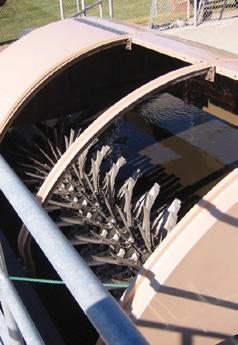

Streamlining Per- and Polyfluoroalkyl Substances Treatment Process Selections
Per- and polyfluoroalkyl substances (PFAS) represent a significant environmental challenge due to their persistence, bioaccumulation, and potential adverse health effects. Often termed “forever chemicals,” PFAS compounds resist breakdown in the environment, leading to contamination of soil, air, and particularly, water sources. This contamination poses a critical threat to public health, with exposure linked to conditions such as cancer, liver damage, and reproductive issues. The ubiquity of PFAS in products like nonstick cookware, firefighting foams, and waterresistant fabrics has further exacerbated their environmental presence.
The U.S. Environmental Protection Agency (EPA) has been grappling with the complexities of regulating PFAS since the early 2000s. Public pressure, legal battles, and increasing scientific evidence have pushed the agency to tighten regulations on these chemicals, culminating in the landmark April 2024 ruling. This new regulation not only sets stringent drinking water standards for PFAS, but also designates perfluorooctanoic acid (PFOA) and perfluorooctane sulfonic acid (PFOS) as hazardous substances under the Comprehensive Environmental Response, Compensation, and Liability Act (CERCLA), also known as Superfund.
The Superfund designation carries profound implications for industries, municipalities, and water treatment facilities. It mandates the cleanup of contaminated sites and allows the government to recover costs from responsible parties. This regulatory move, combined with new drinking water limits, means that water treatment facilities must now prepare for complex, expensive upgrades to their systems to comply with the regulations by 2031.
This article examines the challenges that the new PFAS regulations pose to water treatment facilities, focusing on the technical, regulatory, and financial complexities of compliance. It provides an in-depth analysis of the available PFAS treatment technologies, discusses the secondary waste streams these technologies generate, and offers a roadmap for streamlining the treatment selection
Phil Locke and Meg Simms
process to meet the 2031 compliance deadline.
Regulatory Background and the Evolution of PFAS Policy
The EPA’s recent regulatory actions on PFAS are the result of over two decades of mounting evidence linking these chemicals to severe environmental and health impacts. The PFAS first came under scrutiny in the early 2000s, with public awareness growing after studies revealed widespread contamination of drinking water supplies in communities near industrial sites and military bases where PFAS-containing firefighting foams were used.
Initially, EPA responded by issuing health advisories and voluntary reduction programs for PFAS manufacturers. In 2006, EPA launched the PFOA Stewardship Program, in which major chemical companies agreed to phase out the production and use of PFOA and PFOS. These voluntary measures, however, did little to address the contamination already present in the environment.
By the 2010s, studies linking PFAS to various health conditions, such as thyroid disease, testicular cancer, and low birth weight, prompted further regulatory action. In 2016, EPA issued a nonenforceable health advisory level of 70 parts per tril (ppt) for PFOA and PFOS in drinking water. This was followed by state-level actions in places like Michigan and New Jersey, which set their own enforceable limits on PFAS in drinking water.
Public pressure for stronger regulation continued to build as lawsuits against major PFAS manufacturers, such as DuPont and 3M, shed light on the extent of the contamination and corporate negligence. High-profile cases, such as the contamination of the Cape Fear River in North Carolina and a site in Decatur, Ala., where thousands of people were exposed to PFAS-contaminated water, fueled the call for federal action.
Finally, in April 2024, EPA took a significant step by designating PFOA and
Phil Locke, P.E., is senior project manager and Meg Simms is an engineer intern with McKim & Creed in Clearwater.
PFOS as hazardous substances under CERCLA. This designation gives EPA the authority to require responsible parties to clean up PFAS contamination, and it enables affected communities to seek compensation for damages. Under CERCLA, any party that has contributed to the release of hazardous substances can be held liable for the costs of cleanup, which can be immense.
In addition to the CERCLA designation, EPA’s new drinking water regulation sets a maximum contaminant level (MCL) for PFOA and PFOS at 4 ppt, significantly lower than previous health advisories. This new standard forces water systems across the United States to assess their PFAS levels and implement treatment technologies capable of reducing concentrations to the new regulatory limits.
The regulatory landscape is further complicated by the potential for future regulation of additional PFAS compounds. While the 2024 regulation focuses primarily on PFOA and PFOS, other PFAS compounds, such as GenX chemicals and perfluorobutane sulfonic acid, are also under scrutiny. Water systems must therefore consider not only current regulations, but also the likelihood of future rules when selecting treatment technologies.
PFAS Treatment Technologies
Removal of PFAS from drinking water requires advanced treatment technologies due to the unique chemical properties of these compounds. Traditional water treatment methods, such as coagulation, sedimentation, and chlorination, are generally ineffective at removing PFAS because of their resistance to degradation and the stability of their carbonfluorine bonds. The three main approaches to PFAS treatment—ion exchange, granular activated carbon (GAC), and membrane
Continued on page 10




1. POLYMER REDUCTION: P6 PolyMix® Systems reduce polymer consumption by providing complete polymer/sludge mixing in a shear-sensitive manner. This patented mixing process allows long-strand polymer chains to remain intact and unbroken and wastewater floc to remain intact and unsheared. Typical applications result in a 25-50% REDUCTION IN POLYMER CONSUMPTION, thus saving the customer thousands of dollars in polymer expenses. By not breaking up the polymer chains, the dewatering equipment will experience less fouling, providing more reliability and reducing equipment cleaning costs.
2. DRIER CAKE SOLIDS: P6 PolyMix® technology optimizes the polymer and sludge mixing process, allowing INCREASE DEWATERED SOLIDS CONCENTRATION and INCREASED PERCENT SOLIDS CAPTURED. This unique mixing process results in more efficient sludge hauling, allowing customers to transport less water and more dewatered cake off-site.
3. ELIMINATION OF PUMP MAINTENANCE: P6 PolyMix® technology reduces pump parts and maintenance by utilizing the abrasion-resistant Discflo pumping principles of Boundary Layer/Viscous Drag. This principle can save the customer thousands of dollars in parts and maintenance over the lifetime of the equipment. All P6 PolyMix® systems in the municipal market include a 10-YEAR (extendable to 20 years) 100% WET END WEAR WARRANTY, No other pump manufacturer in the industry provides a wear warranty, let alone a 20-year wear warranty!
4. PUMPS & MIXES: P6 PolyMix® technology uses the unique principles of Boundary Layer/Viscous Drag for mixing polymer versus a mixer/check valve; this, paired with its unique InjeX™ polymer injection mixing chamber, is designed for MINIMAL POLYMER DEGRIDATION, allowing for maximum polymer savings. The hydraulic shear forces within the mixing pump provide a complete homogeneous wastewater polymer slurry fed to the dewatering equipment without breaking the long chain polymers or reducing floc size.
5. LOWER OPERATING PRESSURE AND INSTALLED HORESPOWER: P6 PolyMix® technology dramatically reduces the operating pressure by reducing back pressure within the piping system due to eliminating mixer/check valves. In some applications, customers have had a 75% REDUCTION IN PRESSURE Lower pressure allows the feed pump to operate at lower horsepower. HORSEPOWER SAVINGS OF UP TO 50% OR MORE are possible by installing a P6 PolyMix® system. Customers can see substantial long-term energy savings and reduced upfront capital costs associated with lower installed horsepower.
6. HOW IS IT APPLIED: P6 PolyMix® systems entirely replace bulky, expensive, outdated traditional sludge feed pumps. You can now replace thousands of dollars in equipment and regain valuable real estate space by switching to P6 PolyMix® and utilizing its unique compact design, patented process for eliminating mixer/check valves, and ultra-efficient polymer mixing process. Contact us to learn how P6 PolyMix® can revolutionize the efficiency of your BELT FILTER PRESSES, GRAVITY BELT THICKENERS, ROTARY THICKENERS, SCREW PRESSES, AND CRENTIFUGES.
separation such as reverse osmosis (RO)— have emerged as the most viable options for PFAS removal. Each method, however, has its own limitations, cost implications, and challenges in terms of waste management.
Ion Exchange
Ion exchange involves the use of resins to remove PFAS from water. These resins are typically either anion or cation exchange materials designed to selectively bind with PFAS molecules, effectively removing them from the water stream. Ion exchange works by exchanging ions from the resin for the ions in the water, with the resin binding to the PFAS molecules in place of more benign ions such as chloride or hydroxide.
Process Details
S Water containing PFAS passes through a column filled with resin beads.
S PFAS molecules, particularly long-chain compounds like PFOA and PFOS, are attracted to the charged surface of the resin.
S Over time, the resin becomes “spent” as it becomes saturated with PFAS and other contaminants, and it needs to be either regenerated or replaced.
Advantages
S Ion exchange resins are highly effective at removing both long- and short-chain PFAS, which makes this method versatile.
S The technology is relatively easy to operate and integrate into existing water treatment systems.
S It has a higher removal efficiency for short-chain PFAS compared to GAC.
Limitations
S Regeneration of the resins can be complex, as it requires the use of chemical solutions to wash the resin, generating concentrated PFAS-laden wastewater that must be properly managed.
S Spent resins must either be incinerated (a costly process) or landfilled in hazardous waste sites, further complicating waste management under the new CERCLA regulations.
Granular Activated Carbon
One of the most commonly used treatment technologies for PFAS removal is GAC due to its relative simplicity and effectiveness in adsorbing contaminants. It consists of small granules of carbon that have been treated to have a large surface
area, enabling them to adsorb a wide range of organic compounds, including PFAS.
Process Details
S Water flows through a bed of activated carbon granules.
S The PFAS molecules, particularly longchain compounds like PFOA and PFOS, adhere to the carbon surfaces, removing them from the water.
S The GAC bed requires periodic replacement or regeneration as it becomes saturated with contaminants.
Advantages
S The GAC is particularly effective at removing long-chain PFAS, like PFOA and PFOS, which are more hydrophobic and therefore more likely to adsorb onto the carbon.
S The GAC can also remove other organic contaminants, making it a versatile option for treating a variety of water quality issues.
Limitations
S The GAC is less effective at removing short-chain PFAS compounds, which are more mobile in water and less likely to adsorb onto the carbon surface.
S Spent GAC must be either incinerated or regenerated, with the regeneration process requiring thermal treatment at high temperatures, which is both energyintensive and costly.
S Replacement intervals for GAC can be frequent, depending on the levels of contamination, which increases operational costs.
Membrane Separation: Reverse Osmosis
Membrane separation, or RO, is one of the most effective methods for PFAS removal, as it physically separates the contaminants from the water based on molecular size. The RO uses a semipermeable membrane to filter out not only PFAS, but also a wide range of other contaminants, including salts, metals, and organic compounds.
Process Details
S Water is pressurized and forced through a semipermeable membrane.
S The membrane allows water molecules to pass through, but blocks larger PFAS molecules.
S The process generates two streams (purified water and a concentrated brine) that contain PFAS and other rejected contaminants.
Advantages
S The RO is highly effective at removing a wide spectrum of PFAS compounds, including both long- and short-chain varieties.
S It also removes other types of contaminants, making it a comprehensive solution for water treatment systems facing multiple contamination issues.
Limitations
S The RO is energy-intensive due to the high pressure required to force water through the membrane, leading to higher operational costs.
S It generates a significant volume of concentrated brine, which poses a major disposal challenge, especially given the high levels of PFAS concentrated in the waste stream.
S Water loss can be significant, with some systems losing up to 20 percent of the treated water in the form of brine.
Emerging and Alternative PFAS Treatment Methods
In addition to these traditional technologies, several emerging methods show promise for addressing PFAS contamination, particularly with the need for improved management of waste streams and energy efficiency.
Electrochemical Oxidation
Electrochemical oxidation involves using electric currents to break down PFAS molecules in contaminated water. This process offers a promising way to destroy PFAS onsite, potentially eliminating the need for secondary waste streams such as spent resins, GAC, or brine.
Advantages
Electrochemical oxidation can potentially mineralize PFAS, breaking them down into less-harmful components. It could serve as a sustainable long-term solution by avoiding the generation of waste.
Challenges
The technology is still in the early stages of development and requires significant research and pilot testing before it can be implemented on a large scale.
Advanced Oxidation Processes
Advanced oxidation processes (AOPs) use powerful oxidants, such as hydrogen
Continued on page 12

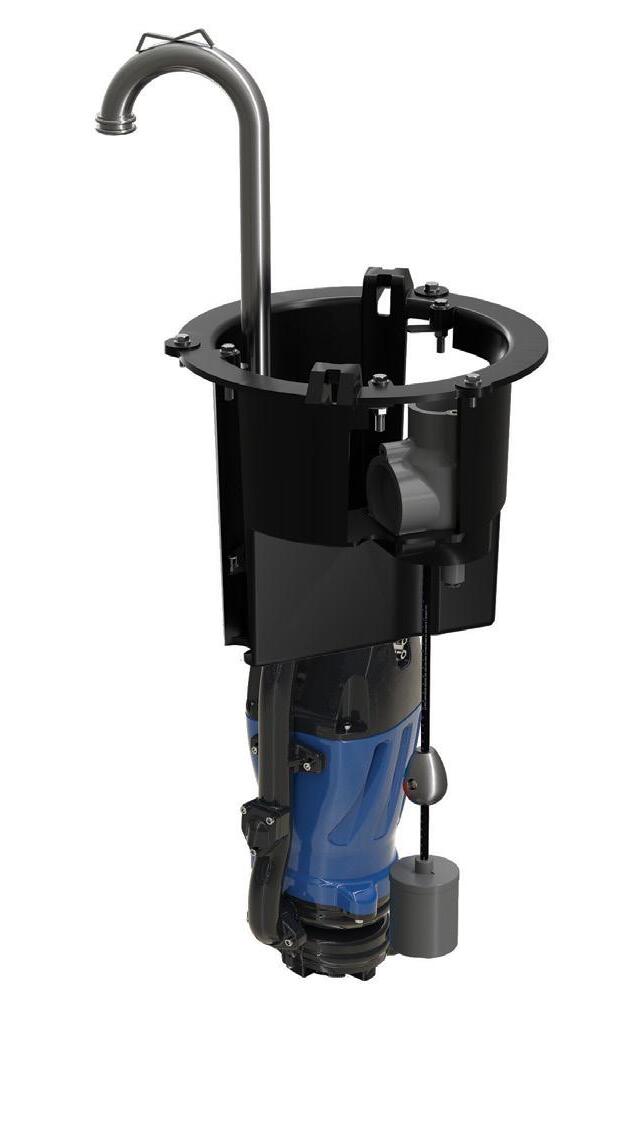
PFAS Regulations

• Determine PFAS MCL levels to balance annual health savings costs with annual PFAS treatment costs:
• Health savings: $1.5B annually
• Initial PFAS treatment costs: $1.5B annually
• PFAS MCL levels established at 4 ppt (i.e., PFOA & PFOS)
• Higher MCL levels would result in lower annual treatment costs

Continued from page 10
peroxide and ultraviolet light, to degrade PFAS molecules. These processes are often used in conjunction with other treatment technologies to enhance PFAS removal.
Advantages
The AOPs have shown potential for breaking down certain types of PFAS, offering a complementary approach to technologies, like GAC and RO.
Challenges
High costs and energy requirements, along with the generation of intermediate byproducts that must be managed, are barriers to widespread adoption.
Adsorption Using Modified Materials
Researchers are investigating novel adsorption materials, such as biochar, carbon nanotubes, and molecularly imprinted polymers, to improve PFAS removal efficiency and reduce the generation of secondary waste.
Advantages
These materials can potentially offer higher adsorption capacity and selectivity for PFAS compared to traditional GAC.
Challenges
While promising, these materials are still largely in the experimental stage, and their large-scale applicability remains uncertain.
Challenges of Secondary Waste Stream Management
While traditional PFAS treatment technologies can effectively reduce PFAS concentrations in drinking water, they all share a common challenge: the generation of secondary waste streams that contain concentrated levels of PFAS. This waste must be carefully managed to prevent further environmental contamination and ensure compliance with regulations. The hazardous substance designation of PFOA and PFOS under CERCLA exacerbates these challenges by introducing legal liabilities and stringent disposal requirements.
Spent Ion Exchange Resins
Spent ion exchange resins represent one of the most difficult waste streams to manage in PFAS treatment systems. Once the resins become saturated with PFAS, they must be either regenerated or replaced, and the disposal of these resins poses significant environmental and regulatory challenges.
Regeneration
Regenerating resins involves washing them with chemical solutions, typically salts or acids, to strip the PFAS from the resin and restore its capacity; however, this process generates a concentrated PFASladen wastewater stream that must be managed. Some systems opt to dispose of this wastewater in hazardous waste landfills, but under the new CERCLA designation, this practice may trigger additional liabilities.
Disposal
If regeneration is not feasible or costeffective, the spent resin must be disposed of as hazardous waste. Given the hazardous classification of PFOA and PFOS, disposal options are limited, and costs are high. Incineration is often required to destroy the PFAS in the resin, but this method is costly and energy-intensive, and the efficiency of incineration in fully destroying PFAS is still being researched.
Used GAC Media
The GAC filters also generate significant waste in the form of spent carbon that is saturated with PFAS. The regeneration and disposal of GAC media represent key challenges in the PFAS treatment process.
Regeneration
Spent GAC can be thermally regenerated by heating it to high temperatures to burn off the adsorbed contaminants. While this process restores the carbon’s adsorptive capacity, it is expensive and energy-intensive. Additionally, some PFAS compounds may not be fully destroyed during the regeneration process, posing a risk of recontamination.
Disposal
Spent GAC that cannot be regenerated must be disposed of in hazardous waste landfills or incinerated. Incineration is costly, and recent studies have raised concerns about the effectiveness of current incineration technologies in completely breaking down PFAS molecules, potentially leading to the release of PFAS into the atmosphere.
Concentrated Brines From RO Systems
The RO systems, while highly effective at removing PFAS, generate a concentrated brine stream that contains the rejected contaminants. This brine represents a significant disposal challenge, particularly for systems with high levels of PFAS contamination.
Treatment Technologies
• Relatively easy column testing
• Can be thermally reactivated (also destroys PFAS)
• Coal-based GAC better than coconut-based for PFAS removal
• High NOM levels reduce runtimes
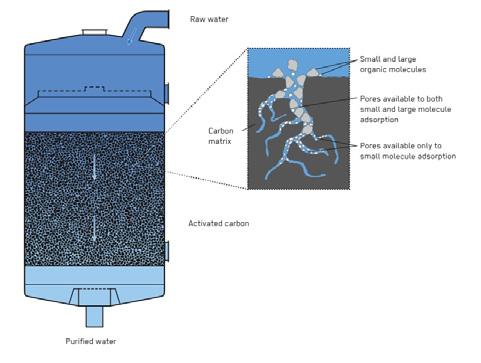
• Resins targeted for PFAS removal
• Smaller footprint than GAC
• Associated brine stream disposal

• NF effective for long-chain PFAS removal
• NF not effective for chloride / monovalent ion removal
• RO for higher TDS/chloride levels & other contaminants
• RO for increasing TDS/chloride levels Continued on page 14

Volume and Composition
The RO systems typically reject 10 to 20 percent of the incoming water as brine, depending on the system configuration and feedwater quality. This brine contains highly concentrated levels of PFAS, salts, and other contaminants, making it difficult to dispose of in an environmentally responsible manner.
Disposal Options
Options for disposing of RO brine include deep well injection, evaporation ponds, and discharge to a wastewater treatment plant; however, these methods come with significant environmental risks and regulatory constraints. Deep well injection is expensive and can lead to groundwater contamination, while evaporation ponds
require large amounts of land and can lead to air quality concerns. Discharging PFASladen brine to wastewater treatment plants can result in the contamination of sludge, which is often land-applied as fertilizer, further spreading the contamination.
Regulatory Requirements for Waste Disposal
The designation of PFOA and PFOS as hazardous substances under CERCLA has added a new layer of complexity to the management of secondary waste streams in PFAS treatment systems. Facilities that generate PFAS-laden waste are now subject to the requirements of hazardous waste disposal under both federal and state regulations. This includes the need for specialized permits, rigorous monitoring, and liability for contamination that may result from improper disposal.
Selection Criteria and Process
•
•
for some PFAS
• Targeted removal of PFAS through specialized resins
• Smaller footprint than GAC
• Highest level of PFAS removal
• Removes nearly all levels of contaminants (95-99%)
• Removes salts / organics
• Many different types of sorbents
• Renewable sources available
• Many sorbents can be regenerated many times
•
•
•
• Media more expensive than GAC
• Early breakthrough of short-chain PFAS
• Specialized resins do not effectively remove other contaminants
• High waste stream volume
• Increased groundwater supply required
• High energy usage
• Newer technology with limited data
• May take several years until municipalities are comfortable using this technology *Generally, not applicable for Southeast US
Costs and Liabilities
Improper disposal of PFAS waste can result in significant financial liabilities under CERCLA. Responsible parties may be required to pay for the cleanup of contaminated sites, and they may also face penalties for violations of hazardous waste regulations. In addition to these legal risks, the costs associated with proper disposal, particularly for incineration or hazardous waste landfilling, are substantial, placing a heavy financial burden on water treatment facilities.
Regulatory and Technical Challenges of PFAS Treatment Implementation
The new PFAS regulations, particularly the hazardous substance designation for PFOA and PFOS under CERCLA, present significant challenges for water treatment facilities. The requirement to comply with the new drinking water limits by 2031 means that systems with elevated PFAS levels must act quickly to design, permit, and implement effective treatment solutions, but the technical, regulatory, and financial hurdles associated with this process are considerable.
Legal Requirements and Timelines
Water systems facing elevated PFAS levels must navigate a complex regulatory landscape to ensure compliance with the new standards by the 2031 deadline. The process typically involves several key steps.
Evaluating PFAS Levels
The first step is to determine the current levels of PFOA, PFOS, and other PFAS compounds in the drinking water supply. This requires extensive sampling and laboratory analysis, which can be time-consuming and costly, particularly for systems serving large populations or with complex water sources.
Identifying Treatment Solutions
Once PFAS levels are known, water systems must select the most appropriate treatment technologies based on site-specific conditions, including water chemistry, flow rates, and budget constraints. This process requires a careful evaluation of the available treatment options, including their effectiveness, operational requirements, and waste management considerations.
Securing Permits
Installing new treatment technologies
Bioactiflo™ Can Handle Your Wet Weather
The Bioactiflo™ system consists of the compact Actiflo® clarification process coupled with rapid soluble BOD uptake achieved when return activated sludge is combined with raw wastewater under aerobic conditions.
The Bioactiflo™ process will remove TSS and BOD achieving secondary standards (85% and < 30 mg/L). Bioactiflo™ is a proven solution for wet weather flow challenges, while providing overall WWTP operational flexibility.
www.veoliawatertech.com

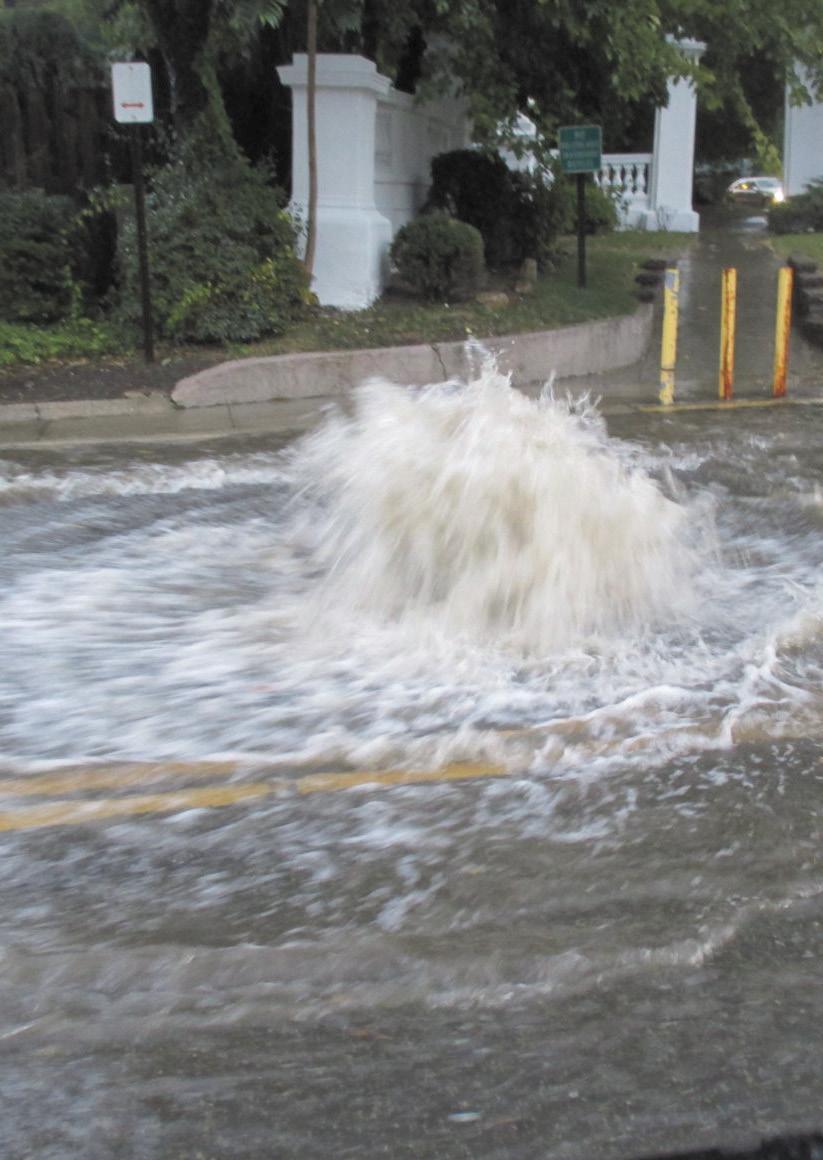
typically requires permits from both state and federal environmental agencies. The permitting process can be lengthy and may involve public hearings, environmental impact assessments, and other regulatory reviews. The hazardous waste designation of PFOA and PFOS under CERCLA adds another layer of complexity to this process, as facilities must demonstrate that they can safely manage the waste generated by their treatment systems.
Developing Engineering Designs
After the selection of treatment technologies and the securing of necessary permits, water systems must work with engineers to develop detailed designs for the new or modified treatment facilities. This includes sizing equipment, designing waste management systems, and integrating the new technologies into existing infrastructure.
Constructing and Commissioning the Facilities
The final step in the process is the
• No additional schedule constraints (i.e., consent order, funding deadlines)
• Multiple processes will be tested
• Larger community with many people / departments
• Larger treatment plant and budget
• Longer client review & procurement periods
• Existing facility in poor condition
• Consent order for TTHM exceedances
• High chloride and TDS levels
• SRF grant with schedule requirements
• Smaller community with ease of access
construction and commissioning of the treatment facilities. This can take several years, depending on the scale of the project and the availability of funding and skilled labor.
Case Study: Implementation of PFAS Treatment Technologies
A notable example of the challenges associated with PFAS treatment implementation is the case of the city of Newburgh, N.Y. In 2016, PFOS was detected in the city’s drinking water supply, which came from a reservoir located near Stewart Air National Guard Base, where PFAScontaining firefighting foam had been used. The city had to act quickly to provide safe drinking water to its residents while also planning for long-term PFAS treatment solutions.
Initial Response
In the immediate aftermath of the PFOS discovery, Newburgh switched to an
Work Plans

alternative water source while evaluating long-term treatment options. The city installed a temporary GAC filtration system to remove PFOS from the contaminated reservoir water and simultaneously worked on plans for a permanent solution.
Long-Term Solution
Newburgh eventually opted to install a combination of GAC and ion exchange systems to provide comprehensive PFAS removal. The city also had to secure state and federal funding to cover the costs of the new treatment infrastructure, which were estimated to be in the tens of millions of dollars.
Challenges
The permitting and design process took several years, and the city faced significant public pressure to expedite the project while ensuring that the selected treatment technologies would provide long-term protection against PFAS contamination. Additionally, managing the secondary waste streams generated by the treatment systems, particularly the spent GAC and ion exchange resins, added another layer of complexity to the project.
Financial Implications for Water Systems
The costs associated with complying with the new PFAS regulations are substantial, particularly for small and medium-sized water systems with limited financial resources. In addition to the capital costs of installing new treatment technologies, water systems must also account for the ongoing operational and maintenance costs associated with these systems, as well as the costs of managing secondary waste streams.
Capital Costs
The capital costs of PFAS treatment systems vary, depending on the technology selected, the size of the system, and the level of contamination. Ion exchange and GAC systems are typically less expensive to install than RO systems, but they generate larger volumes of secondary waste that must be managed, which can increase overall costs.
Operational Costs
The operational costs of PFAS treatment systems include energy costs, chemical costs (for regenerating ion exchange resins, for example), and labor costs for system maintenance. These costs can be significant, particularly for RO systems, which require high energy inputs to operate.
Waste Management Costs
The costs of managing secondary waste streams, such as spent GAC and ion exchange resins or concentrated brines, are a major consideration for water systems. Disposal options for PFAS-laden waste are limited, and the hazardous substance designation under CERCLA further complicates the disposal process by introducing additional legal liabilities and permitting requirements.
Public Relations and Community Engagement
Effective communication with the public is a critical component of PFAS treatment implementation. Water systems facing elevated PFAS levels must be transparent with their communities about the steps they are taking to address the contamination and provide safe drinking water. Public concern about PFAS contamination is high, and water systems must work to build trust with their customers by providing clear, accurate information about the treatment process and the timeline for compliance with the new regulations.
Streamlining the PFAS Treatment Selection Process
Given the time constraints and the complexities of PFAS regulation compliance, water systems must streamline the treatment selection process as much as possible. The selection of the appropriate treatment technology is a critical decision that will have long-term implications for the system’s ability to comply with the new regulations, manage costs, and minimize environmental impact.
Desktop Evaluation
The first step in the treatment selection process is typically a desktop evaluation of the available treatment technologies. This involves gathering data on the effectiveness, costs, and operational requirements of each technology and comparing them against the specific needs and constraints of the water system.
Criteria for Evaluation
Key criteria for evaluating PFAS treatment technologies include capital costs, operational and maintenance costs, effectiveness at removing both long- and short-chain PFAS, ease of operation, waste management requirements, and water loss. Each of these criteria must be carefully weighed to ensure that the selected technology provides the best balance of performance and cost-effectiveness.
Weighted Scoring
In many cases, water systems apply weighting factors to each of the evaluation criteria based on their relative importance. For example, a system with limited financial resources may place more weight on capital and operational costs, while a system located near a hazardous waste landfill may place more weight on waste management considerations. Once the weighting factors are applied, each treatment technology is scored based on its ability to meet the criteria, and the results are used to make a final recommendation.
Pilot Testing and Validation
Once a treatment technology has been selected based on the desktop evaluation, it is often necessary to conduct pilot testing to validate the technology’s performance under real-world conditions. Pilot testing allows water systems to refine the design of the treatment system, identify potential operational challenges, and ensure that the technology will meet regulatory requirements.
Case Studies
Several municipalities have successfully used pilot testing to fine-tune their PFAS treatment processes. For example, the city of Wilmington, N.C., conducted a pilot study of GAC and ion exchange technologies before selecting a combination of the two for its permanent PFAS treatment system. The pilot study helped the city optimize the design of the system and reduce operational costs by identifying the most effective configuration for removing both long- and short-chain PFAS.
Scaling From Pilot to Full Implementation
Once the pilot testing is complete and the treatment technology has been validated, water systems must scale up the design to full implementation. This process involves working with engineers to develop detailed design documents, securing the necessary permits, and constructing the treatment facilities.
Engineering Design Considerations
Key engineering considerations include the size and configuration of the treatment equipment, the integration of the new technology into existing infrastructure, and the design of waste management systems. For example, systems using RO must ensure that they have adequate storage and disposal capacity for the concentrated brine generated by the process.
Project Management and Timeline
The timeline for implementing PFAS treatment systems can be tight, particularly given the 2031 compliance deadline. Effective project management is critical to ensuring that the project stays on schedule and within budget. Water systems must work closely with contractors, engineers, and regulatory agencies to coordinate the various phases of the project and address any challenges that arise during construction.
Conclusion
The new PFAS regulations from EPA, particularly the designation of PFOA and PFOS as hazardous substances under CERCLA and the new MCLs for drinking water, represent a major challenge for water systems across the U.S. Compliance with these regulations requires the implementation of advanced treatment technologies, careful management of secondary waste streams, and significant financial investment.
Water systems facing elevated PFAS levels must act quickly to evaluate their treatment options, secure funding, and begin the process of designing and constructing new treatment facilities. The complexity of the regulatory environment, combined with the technical challenges of PFAS treatment, means that water systems must carefully consider their options and streamline the treatment selection process as much as possible.
While ion exchange, GAC, and RO remain the most viable options for PFAS treatment, emerging technologies, such as electrochemical oxidation and advanced adsorption materials, offer the potential for more sustainable and cost-effective solutions in the future. The long-term success, however, of any PFAS treatment strategy will depend on the ability of water systems to manage the secondary waste streams generated by these technologies and to adapt to the evolving regulatory landscape.
By taking a proactive approach and carefully planning for the future, water systems can navigate the challenges of PFAS regulation compliance and continue to provide safe drinking water to their communities. S

Happy Veterans Day!
Welcome to the magazine’s eighth annual celebration of military service in the United States and the veterans who now work in the water and wastewater industry.
We’re proud to salute these brave and competent men and women who have served—and continue to serve—their country, both here and abroad. They are again helping their fellow citizens by working as water professionals.
Along with medical personnel, police officers, and firefighters, those who work in the water industry are also first responders, providing a vital service to help protect the health and well-being of the community. They are especially vital in times of disaster and crisis, and they provide expertise and support for the recovery efforts that follow—often for weeks and months.

The planet and all living things need water to survive, and the workers in our industry play an important part in ensuring that everyone has the clean, safe water they need.
This year’s section includes:
S EPA Guide: Introduction to Military Occupational Specialties for the Water Workforce
S Memorandum of Understanding
S Reader Profile: Veterans Edition—Arthur Bides
S Honor Walk at Veterans Memorial Park
To the heroic veterans who are now—and to those who will soon be—our colleagues: we appreciate you and salute you! S
EPA Guide: Introduction to Military Occupational Specialties for the Water Workforce
The U.S. Environmental Protection Agency (EPA) and the Department of Veterans Affairs have partnered to connect veterans with careers in the water sector. While serving in the Armed Forces many veterans held Military Occupation Specialties (MOS) that directly or indirectly translate into the types of positions needed in the water sector.
This guide highlights relevant MOS and tips for water and wastewater utilities considering hiring veterans.
What are Military Occupation Specialties?
The MOS is the job title and description used by the Army and Marines to describe each of its jobs. The U.S. Navy and Coast Guard use the term “Rating” and the Air Force uses “Specialty Code.” All of these terms are interchangeable.
Job Qualifications
When a utility is considering a veteran as a potential candidate to hire, knowing their qualifications and experience while serving in the military is important. There are several ways to do this:
S Match the veteran’s MOS with the corresponding page in this guide (see download instructions at the end of the article). This gives information on the water-related MOS, and the skills and duties required.
S You may request that the veteran provide copies of entries into their service record book (SRB), which provide evidence of specific training and qualifications. All branches of the Armed Forces keep records of every formal and informal training that a member receives. This will also cover on-the-job training, which may be the majority of training the veteran has received.
S You may request a copy of the veteran’s discharge papers, known as a DD214. This will provide information on the veteran’s rank, time in service, awards, etc.
S You may also request a copy of the veteran’s verification of military experience and training, known as Form DD2586. Please note
that the veteran may or may not have a copy of this form. It is not standard for veterans to receive this upon discharge. Additionally, this form will only contain “formal” training. All informal training and on-the-job training will be in the veteran’s SRB, which is a more comprehensive way to evaluate skills.
Contacting References
Contacting military references can prove to be very difficult, if not impossible. Most military members transfer duty stations every two to four years, which makes tracking them down a daunting task. Some of the veterans could also have been discharged and moved on to their own civilian careers, making it difficult to obtain updated contact information. When this occurs, there are alternatives:
S All military members are evaluated on their proficiency and conduct every six to 12 months. Some veterans may have copies of their evaluations, which should provide an accurate portrayal of their work skills and general work behavior.
S Award citations will also give the prospective employer a good picture of the veteran.
Jobs in the Water Industry

U.S. Army: Water Treatment Specialist
Overview
Water treatment specialists are primarily responsible for supervising or performing the installation and operation of water purification equipment, as well as dealing with water storage and distribution operations and activities. They also inspect facilities and food supplies for the presence of disease, germs. or other conditions hazardous to health and the environment.

Basic Skills
Water treatment specialists install, operate, and maintain equipment used to provide potable water and perform water quality analysis tests. They perform field water purification and treatment, water quality analysis, and generator and pump operations.
Soldiers ranked private through specialist (skill level 10) assist in water reconnaissance, site preparation, and setup of water treatment activity. They operate and maintain water treatment equipment; receive, issue, and store potable water; and perform water quality analysis testing and verification.
Some of the equipment and systems these soldiers use include:
S Forward area water point supply systems
S Hypochlorination units
S From 125- up to 600-gallon-per-minute (gpm) water pumps
S From 125- up to 3,000-gallon-per-hour (gph) light, medium, tactical (LMT) reverse osmosis water purification units
S From 500- up to a 50,000-gallon capacity collapsible fabric potable water tanks
S 300,000- to 800,000-gallon potable water storage and distribution system
These soldiers carry out the following tasks as part of their duties:
S Perform water reconnaissance (e.g., locating new water sources)
S Conduct water analysis testing
S Complete entries on water reports/logs/forms
S Operate reverse osmosis water purification units
S Setup/operate/dismantle and perform preventive maintenance check and services (PMCS) on ocean intake structure systems
S Operate and perform PMCS on diesel generators, pumps, and air compressors
S Operate and perform PMCS on a well head
S Set up/operate/perform PMCS and dismantle hypochlorination units
S Perform water quality analysis testing and verification
S Perform storage, transportation, and disposal of hazardous material and waste
Continued on page 20
Continued from page 19
Advanced Skills
As soldiers gain more time and experience in this MOS, they will earn the rank of a noncommissioned officer (NCO). These water treatment NCOs are the sergeants, staff sergeants, and sergeant first class and are considered the backbone of the skill and leadership of this MOS.
In addition to mastering the basic skills listed, the major duties for these NCOs are to train, supervise, analyze, and manage the work of the soldiers they lead. In addition to training and supervising junior soldiers, the following are some additional skills in which these soldiers maintain proficiency:
S Sergeants (skill level 20) operate, perform and install water purification equipment, water storage, and water distribution operations and activities.
S Staff sergeants (skill level 30) conduct water reconnaissance, develop water sources and water points, supervise and train soldiers to perform water treatment tasks, perform operator maintenance and inspect operational condition and maintenance of equipment, determine treatment method and treat water for purification, analyze and verify test results of raw and treated water, maintain and inventory water treatment equipment and chemical supplies, and prepare water treatment reports.
S Sergeant first class (Skill Level 40) directs water reconnaissance and water point development for division, corps, and echelons above corps; manages operation and ensures quality control of water supply, storage, distribution and purification activities; performs staff and advisory duties; furnishes reports to headquarters; develops area water supply and treatment plans; and supervises operations.

U.S. Navy: Utilitiesman
Overview
Utilitiesman, also known as seabees, work with plumbing, heating, steam, compressed air, fuel storage, and distribution systems. Their work also includes water treatment and distribution systems, air conditioning and refrigeration equipment, and sewage collecting and disposal facilities at Navy shore installations around the world.
Basic Skills
S Locate and determine quality and quantity of water sources
S Install and operate field potable water treatment and wastewater equipment
S Analyze water for chemical and physical characteristics to determine water purification treatment methods
S Install and maintain systems requiring plumbing and pipefitting skills
S Install, operate, and repair heating, piping, ventilation, and air conditioning systems
S Operate and maintain water and wastewater systems and treatment plants
S Identify and carry out procedures to limit or minimize the adverse effects of environmental pollution
S Interpret blueprints and prepare sketches for projects

S Provide estimates of material, labor, and equipment requirements for projects
Advanced Skills
Advanced utilitiesman are trained to perform more-complex duties as they advance. Some of the main areas and equipment learned include:
S Water treatment and purification
S Sewage treatment and disposal
S Facilities maintenance management
S Blueprint reading and technical drawings
S Planning, estimating, and scheduling
S Advanced base planning
S Planning plumbing projects
S Compressed air systems
S Boilers, ducts, and ventilation systems
S Air conditioning and refrigeration
S Solar energy
S Environmental pollution control
As part of the work advanced utilitiesmen perform with water treatment and purification operations, they learn and use more-specific skills, such as:
S Selecting water sources based on source quantity, quality, and reliability
S Selecting and utilizing water points such as surface water (streams, lakes, rivers), groundwater (wells, springs), seawater, rain, snow, and ice
S Developing water sources
S Determining water contamination
S Analyzing and verifying test results of raw and treated water
S Determining treatment method and treat water for purification
S Selecting, setting up, and operating water treatment equipment including distillation, reverse osmosis, filtration, and disinfection units.
S Emergency treatment methods
S Wastewater and sewage treatment
S Disposing of and monitoring sewage effluents

U.S. Air Force: Water and Fuel Systems Maintenance
Overview
Airmen working in the Air Force’s water and fuel systems maintenance learn many
skills throughout their careers. They work on plumbing, water distribution, wastewater collection systems, water and wastewater treatment systems, fire suppression, backflow prevention systems, and natural gas distribution systems; they also work on and liquid fuel storage, distribution, and dispensing systems.
Basic Skills
S Locate and determine quality and quantity of water sources
S Install and operate field potable water treatment and wastewater equipment
S Analyze water for chemical and physical characteristics to determine water purification treatment methods
S Perform planning activities and quality assurance to include service contracts and facility surveys
S Install, operate and maintain, and inspect and repair natural gas systems, plumbing, water and wastewater treatment systems, fire suppression systems, backflow prevention systems, aircraft hydrant refueling, and ground product dispensing systems
S Monitor systems operation to ensure efficiency and compliance with local, state, federal, and defense department regulations for safety and environmental regulations for hazardous materials
S Perform inspections, preventive maintenance, winterization, and overhaul of systems
S Operationally inspect and diagnose malfunctions in mechanical components using technical orders, manufacturer specifications, local procedures, codes, and directives
S Inspect condition and operation of electrical components
S Conduct fuel system components inspections and maintenance on fuel system piping
S Perform confined space entries to accomplish system maintenance
S Solve complex maintenance problems by studying layout drawings, wiring diagrams, and schematics to analyze, isolate, and troubleshoot system malfunctions
S Remove, repair, and replace defective components
S Install, modify, repair, and maintain a variety of new and existing utility distribution and collection systems and equipment such as sewage, water, gas distribution systems, backflow prevention devices, and fire sprinkler systems.
S Locate and tap main lines
S Coordinate locations of field latrines and pits with engineering and medical staff
S Analyze proposed work to determine resource allocation
S Initiate fuels facility sustainment, restoration and modernization, and military construction projects to include project review, monitoring, and acceptance
S Prepare cost estimates and supply procurement for in-service work
S Apply engineered performance standards to plan and estimate work
S Ensure planning activities comply with environmental, safety, and hazardous materials regulations
Advanced Skills
As airmen advance through the ranks, they increase their expertise and take on leadership roles. As the airmen are promoted, they advance through the following skill levels:
S 3E411 - Helper
S 3e431 - Apprentice
S 3e451 - Journeyman
S 3e471 - Craftsman
S 3e491 - Superintendent
(Note: Superintendents are senior master sergeants holding a community college of the Air Force associates degree. They serve in leadership/management positions and work with budgets, manpower, resources, and personnel management.)

United Services Military Apprenticeship Program:
U.S. Navy, U.S. Marine Corps, U.S. Coast Guard
Program Information
The United Services Military Apprenticeship Program (USMAP) is a formal military training program executed by the Center for Personal and Professional Development, which provides active duty Coast Guard, Marine Corps, and Navy service members the opportunity to improve their job skills and complete their civilian apprenticeship
requirements while they are on active duty. The U.S. Department of Labor provides the nationally recognized "certificate of completion" upon program completion.
Additional Military Jobs That Support Drinking Water and Wastewater Utilities
There are additional MOS in the Armed Forces that are not directly related to water treatment, but are relevant for some of the positions found at water and wastewater utilities. Some examples of these additional MOS include:
S Electricians: All of the branches of the Armed Forces have some type of electrician MOS or rating.
S Heavy equipment operators: Heavy equipment operators of all kinds can also be found in any branch of the military.
S Mechanics: Mechanics of all types can be found in every branch of the Armed Forces, including small generator mechanics, automotive and aircraft mechanics, and mechanics working on some of the largest engines in the world aboard ships.
Additional MOS may include jobs such as:
S Contracts and procurement
S Budgeting
S Administration
S Management
S Topographic surveyor
S Electronics repair
S Quarrying specialists
S Plumbers
S Laboratory technicians
S Computer and network administrators
S Metal workers
The entire guide can be found at water.epa. gov/infrastructure/sustain/ws_workforce.cfm.
Resource Links
• Department of Veterans Affairs (Vet Success): www.vetsuccess.va.gov/public/ military_ skills_translators.html
• Work for Water: http://www.workforwater. org/ American Counsel on Education: www. acenet.edu/news-room/Pages/Military-Guide Online.aspx
• United Services Military Apprenticeship Program: www.usmap.cnet.navy.mil/usmapss/ static/trades.jsp S

MEMORANDUM OF UNDERSTANDING BETWEEN DEPARTMENT OF VETERANS AFFAIRS
VOCATIONAL REHABILITATION AND EMPLOYMENT SERVICE AND U.S. ENVIRONMENTAL PROTECTION AGENCY OFFICE OF GROUND WATER AND DRINKING WATER OFFICE OF WASTEWATER MANAGEMENT
Promoting a Veteran Workforce for the Water Sector
A well-trained and knowledgeable workforce is vital to protecting public health and the environment, and ensuring the long-term sustainability of water and wastewater systems. For this reason, predicted losses to the water and wastewater workforce due to baby boomer retirements raise concerns. The report, Succession Planning for a Vital Workforce in the Information Age (2005), published by the American Water Works Association (AWWA) and the Awwa Research Foundation, projected that 37 percent of water utility workers and 32 percent of wastewater utility workers will be eligible to retire in the next 10 years. In addition, the U.S. Department of Labor estimates that the need for water and wastewater operators will increase by 20 percent.
Veterans represent a major recruiting opportunity for water and wastewater utilities. Prior military experience gives veterans an understanding of teamwork, discipline, and personal accountability that can make them excellent employees for these fields. In addition, many veterans already possess technical skills and training that are directly transferable to careers in the water sector.
A. Purpose
The Department of Veterans Affairs (VA) Vocational Rehabilitation and Employment (VR&E) Service and the U.S. Environmental Protection Agency (EPA) agree to work jointly on promotional activities that will help advance and improve employment opportunities for veterans with disabilities while supporting the development of a trained and competent workforce for the water sector. Both VR&E Service and EPA believe that working closely together can improve employment outcomes for veterans with disabilities while helping to address predicted losses to the water sector workforce.
This memorandum of understanding (MOU) establishes the framework for VR&E Service and EPA to encourage their respective departments, offices, and stakeholders to work cooperatively to promote water sector careers, educate stakeholders about VR&E programs, and provide improved services to their mutual partners. This agreement does not compel EPA or its partner organizations in the water sector to hire veterans; however, this document encourages the development of connections among employers in the water sector, EPA, and VR&E Service to facilitate the placement of veterans with disabilities into this essential employment sector.
B. Terms
VR&E Service will assign a point of contact (POC) liaison that will share information and coordinate activities to carry out and support the objectives of this MOU. Specifically the VR&E Service POC will:
• Serve as the contact person for state and local water sector employers interested in hiring veterans to provide information and guidance regarding joint VR&E and EPA activities.
• Work with EPA POC to create greater awareness of opportunities to employ veterans with service-connected disabilities within the water sector.
• Work with EPA POC to construct new lines of communication to

inform veterans with service-connected disabilities about training and employment opportunities offered in the water sector.
• Identify and encourage partnership opportunities between water sector partners and VA regional offices, including connecting VR&E employment coordinators (points of contact) with water sector stakeholders at the state and local level.
• Create a learning opportunity to share information crucial to these joint promotional activities. This includes information about VR&E programs, as well as workforce-related information such as position types, education, and skill sets required.
The EPA will assign a POC liaison who will share information and coordinate activities to carry out and support the objectives of this MOU. Specifically, the EPA POC will:
• Serve as a contact person to provide information and guidance regarding joint VR&E and EPA activities.
• Work with VR&E POC to create greater awareness of opportunities to employ veterans with service-connected disabilities within the water sector.
• Work with VR&E POC to construct new lines of communication to inform veterans with service-connected disabilities about training and employment opportunities offered in the water sector.
• Identify and encourage partnership opportunities between water sector partners and VA regional offices, including connecting VR&E employment coordinators with water sector stakeholders at the state and local level.
• Create a learning opportunity to share information crucial to these joint promotional activities. This includes information about VR&E programs, as well as workforce-related information such as position types, education, and skill sets required.
This agreement does not in and of itself authorize the expenditure or reimbursement of any funds, and nothing in this agreement obligates either party to expend appropriations or other funds, or to enter into any contract or other obligation. This agreement does not create any right or benefit, substantive or procedural, by persons who are not party to this agreement. This agreement does not apply to any person outside of VRE and EPA.
Further, this agreement will not be interpreted to limit, supersede, or otherwise affect either party’s normal operations or decisions in carrying out their mission or statutory or regulatory duties. This agreement does not restrict the parties from participating in similar activities or arrangements with other entities.
This agreement will become effective upon the date of signature of the parties and will remain in effect until terminated by either or both parties, but will be jointly reviewed at five-year intervals from the date of signature. S
FWRJ READER PROFILE: VETERANS EDITION
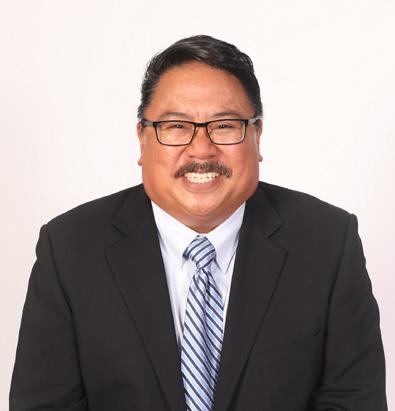
Arthur Bides, P.E.,
ENV SP, Associate DBIA Arcadis, Jacksonville
Work title and years of service.
I’m principal water engineer at Arcadis and have 12 years of experience in the water/ wastewater field.
Give some details about your military service.
I served six years in the Marine Corps and Marine Corps Reserves in Aviation Ordnance and eight years in the Florida Army National Guard as an engineer.
What does your job entail?
As a principal water engineer I lead technical delivery of water-related projects,
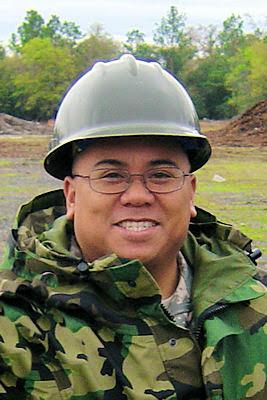
providing expertise in water supply, wastewater, drainage, and/or flood risk management. I manage multidisciplinary teams, ensure highquality client outcomes, support business development, and mentor junior staff.
What education and training have you had?
I have a bachelor of science degree in civil engineering from the University of Florida, a master’s degree in public policy from Jacksonville University, and a master’s degree in building construction from Auburn University.
What do you like best about your job?
What I like best about my role is the ability to make a tangible difference in my community—delivering innovative and sustainable water solutions that benefit both people and the environment, while working with a passionate team and continually developing my expertise.
What professional organizations do you belong to?
I belong to FWEA and FSAWWA.
How have the organizations helped your career?
Both FSAWWA and FWEA have been instrumental in my professional development, providing access to cutting-edge knowledge, valuable networks, and leadership opportunities. Their support has strengthened my technical expertise, enhanced my industry reputation, and empowered me to deliver innovative, sustainable water solutions for our communities.

What do you like best about the industry?
What I enjoy most about the water industry is its unique blend of societal importance, environmental stewardship, technical challenge, and continuous innovation. It’s a sector where every project matters—and where your work can leave a lasting positive legacy.
How has your time in the military affected your career in the industry?
My military experience has shaped me into a resilient and adaptable leader. These qualities have enabled me to manage complex projects, build effective teams, and deliver sustainable solutions in the water industry—always with a focus on service, safety, and excellence.
What do you do when you’re not working?
My hobbies are scuba diving and woodworking. I volunteer as the president of the Filipino American Jacksonville Chamber of Commerce, as well as volunteering as membership chair and veterans liaison for FSAWWA Region II. S


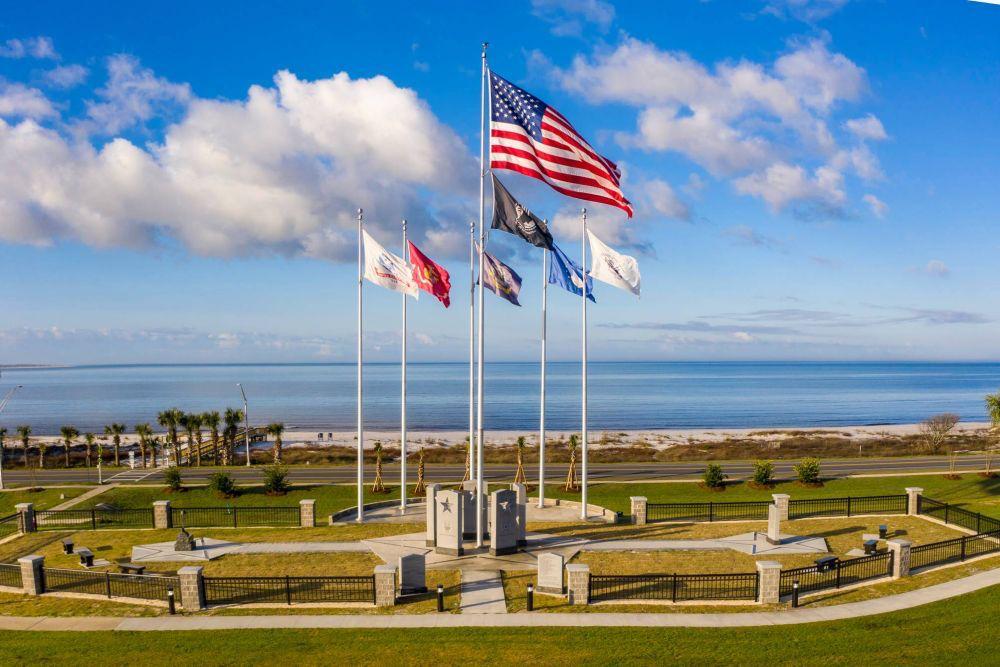



Honor Walk at Veterans Memorial Park
The Honor Walk at Veterans Memorial Park, located at Beacon Hill between Port St. Joe and Mexico Beach, was constructed directly on the bluff overlooking Highway 98 and the Gulf of Mexico. This beautiful setting provides a very fitting place to pay tribute to those men and women who are and have served the United States so faithfully.
In 2017 a committee of patriotic citizens and local veterans started planning and fundraising for the Honor Walk. A portion of the funds needed to create the walk came from friends and family members who chose to use this beautiful park to honor or memorialize a special veteran in their life with the Engrave a Brick program.
While the walk was funded in part by the brick program, the bulk of the funds required to make this beautiful park a reality came from the generous contributions of private citizens, organizations, and community-minded corporate partners. These American patriots— individuals, businesses, and companies—joined arms to assure that generations to come will honor the sacrifices these veterans have made to provide and protect American freedoms.
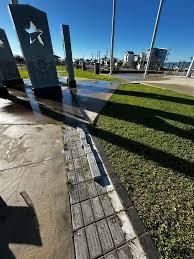
The centerpiece of the area is a large, lighted American Flag atop a flag pole 70 feet in height, with a gorgeous memorial below of the pavers honoring local veterans.
The park includes a beautiful amphitheater honoring the armed forces. There are also playgrounds, beach access, pavilions, a large dog park, and pickleball courts.
The entire honor walk area includes appropriate lighting to accommodate evening visitors. The perimeter of this special area of the park is surrounded by a low black iron fence with stone columns. The existing sidewalk that connects the parking to the beach boardwalk provides access to the walk area. Nine granite benches are strategically placed to provide visitors a place to rest, reflect, and enjoy the spectacular view of the gulf.
At the base of the American flag pole is a large five-point star set in a pentagon. Each facet of the star holds a monument stone towering 8 feet in height, 3 feet wide, and 12 inches thick— one monument to represent each branch of the service. The monument stones are anchored by black stone bases 40 inches long, 16 inches wide, and 12 inches high. Extending out from
opposite sides of the center base are two 20foot brick paver walkways. These walkways terminate with monuments placed in the center of smaller pentagon bases. The names of Gulf County veterans killed in action are engraved into one of these monuments. Extending out from the honor walk area toward the gulf is a semicircle wall of stone topped by five flag poles 50 feet in height, displaying the flags of each of the five branches of service. Memorials are included for the following wars:
S Vietnam
S Persian Gulf
S Panama
S World War II
S Lebanon/Grenada
S Korea
S World War I
The Honor Walk Committee, Gulf County Board of County Commissioners, is the organization responsible for installation of the Honor Walk. It was officially dedicated on Veterans Day, Nov. 11, 2020. S















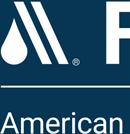






Another Avenue of Training

Kevin Shopshire President, FWPCOA
all is all around us here in Florida.
The other day I saw a palm frond had browned and fallen from the tree; then, the thermostat hesitated a couple of hours before reaching the eighty-degree mark. I’d say it was breathtaking, but that was due to the ever-slightly-reduced humidity, laced with pollen.
I’ve been writing this year mostly about avenues of self-improvement. One of my topics was the ability of utilizing networking as a training source. Through in-person networking, you have the ability to establish a network of not just colleagues, but friends. I am happy to say I’ve established many friendships over the years through networking events, whether municipal colleagues, consultants, salespersons, or other water personnel.
One such friendship is with a sampler company’s sales representative. I won’t mention the company by name, as I’m not sure of their advertising status with this publication. I’ve known of this company almost the entirety of my pretreatment career. I’ve seen the company change names,
At a recent conference, I ran into my friend, Mike, the company’s sales representative, and had a nice lengthy conversation about workforce turnover these days, and the current employees constantly training new employees on day-to-day operations. During our conversation, Mike offered to come to our plant, to give refresher training of their sampling equipment. I told him, every year I assist our operators setting up the automated samplers for my annual pretreatment sampling event. They are familiar with the sampler, and some are proficient.
Our workplace recently had multiple retirements and has a reasonably new staff of operators and trainees. Our employees are all trained in-house on sampler operations. After discussion with the plant manager, we


thought it would be a good idea to accept Mike’s offer. Why turn down free training? Mike, and another sales representative, Jarrod, came out to our plant, from two different Florida locations, on a day when all the operators would be available. It was a typical Florida fall day, humid and ninety degrees, with a slight breeze. They provided about an hour’s worth of full training for the automated sampler. The operators were able to learn—in-person and for free—the full gamut of sampler operations, directly from the company that sells the equipment. They provided the standard operations, troubleshooting, what-if scenarios, and answered multiple questions. In addition to the in-depth training, the operators now have a direct contact to the sales representatives to discuss purchase options for accessories, replacement parts, and other issues.
Although no sales were made on this trip to our plant, the sales representatives now have an expanded networking circle of people who can recommend them and their product to colleagues, without paying for advertising. We used to believe “word of mouth” is the best advertising and this is how it gets established. There are more avenues of training besides classroom and online courses. Not all training comes with continuing education units and not every conversation with a sales rep is to buy a product.
Let’s utilize all possible avenues of learning to continue to better ourselves— especially when it’s free. S
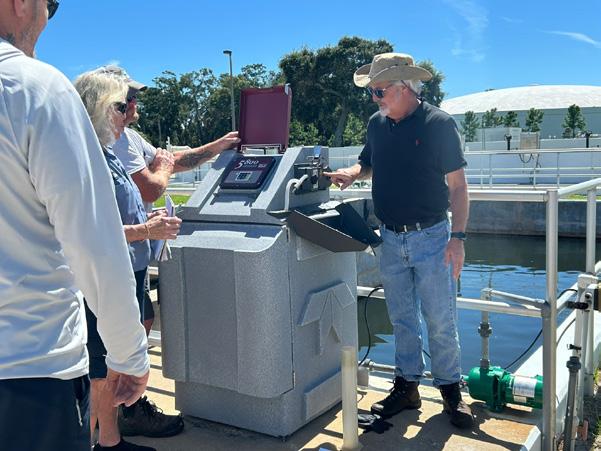


Operators: Take the CEU Challenge!
Members of the Florida Water and Pollution Control Operators Association (FWPCOA) may earn continuing education units through the CEU Challenge! Answer the questions published on this page, based on articles in this month’s issue. Circle the letter of each correct answer. There is only one correct answer to each question! Answer 80 percent of the questions on any article correctly to earn 0.1 CEU for your license. Retests are available.
This month’s editorial theme is Water Treatment. Look above each set of questions to see if it is for water operators (DW), distribution system operators (DS), or wastewater operators (WW). Mail the completed page (or a photocopy) to: Florida Environmental Professionals Training, P.O. Box 33119, Palm Beach Gardens, Fla. 33420-3119, or scan and email a copy to memfwpcoa@gmail.com. Enclose $15 for each set of questions you choose to answer (make checks payable to FWPCOA). You MUST be an FWPCOA member before you can submit your answers!
EARN CEUS BY ANSWERING QUESTIONS FROM PREVIOUS JOURNAL ISSUES! Contact FWPCOA at membership@fwpcoa.org or at 561-840-0340. Articles from past issues can be viewed on the Journal website, www.fwrj.com.
Streamlining Per- and Polyfluoroalkyl Substances Treatment Process Selection
Phil Locke and Meg Simms (Article 1: CEU = 0.1DS/DW/WW02015460)
1. What federal law now designates perfluorooctanoic acid (PFOA) and perfluorooctane sulfonic acid (PFOS) as hazardous substances?
a) Clean Water Act
b) Safe Drinking Water Act
c) Comprehensive Environmental Response, Compensation, and Liability Act (CERCLA)
d) Resource Conservation and Recovery Act
2. What is the new EPA maximum contaminant level (MCL) for PFOA and PFOS in drinking water?
a) 70 parts per trillion (ppt) b) 10 ppt
c) 4 ppt d) 1 ppt
3. Which PFAS treatment technology is most effective at removing both long- and short-chain PFAS?
a) Granular activated carbon (GAC)
b) Ion exchange
c) Chlorination
d) Sedimentation
4. What is a significant challenge associated with reverse osmosis for PFAS removal?
a) Low removal efficiency
b) Generation of concentrated brine waste
c) Inability to remove metals
d) No operational costs
5. What is a key regulatory deadline for water treatment facilities to comply with new PFAS standards?
a) 2025 b) 2027
c) 2029 d) 2031
Unique Findings of Piloting With Ozone, Granular Activated Carbon, and Ion Exchange in Central Florida
Zach Protas, Jon Bundy, Kathy Traexler, and Austin Humphreys (Article 2: CEU = 0.1DS/DW/02015461)
1. What is the main purpose of the pilot study conducted at the Hidden Springs Water Supply Facility?
a) To test new well drilling techniques.
b) To assess the effectiveness of different treatment technologies for improving finished water quality.
c) To evaluate the removal of hydrogen sulfide and total activated carbon using various treatment alternatives.
d) To increase the facility’s maximum demand.
2. Which of the following treatment alternatives was not evaluated in the pilot study?
a) Ozone
b) Ozone followed by granular activated carbon (GAC)
c) Ozone followed by ion exchange (IX)
d) Reverse osmosis
3. Which treatment alternative provided 100 percent total sulfide removal throughout the study?
a) Catalytic GAC
c) Ozone
b) Ozone followed by IX
d) GAC only
4. What operational challenge was encountered with the catalytic GAC pilot?
a) Excessive chlorine formation
b) High arsenic levels
c) Bacterial growth on the media
d) Low water temperature
5. What was the main reason for relocating the ozonated water storage tank?
a) To increase storage capacity.
b) To reduce maintenance costs.
c) To prevent algal growth by moving it out of direct sunlight.
d) To improve water temperature control.






















√ Double Interlocking Constructio









Innovative Aluminum Cover Design for Water and Wastewater Application













√ 6” (Standard) or 3” Wid Deck Plank





Piece Extruded Hing √ Gasketed Interlock & Edge Handle








√ 20+ 606 T6 Aluminum Extrusion


√ 50 psf Live Load (Standard Design



√ 400 Lbs. Concentrated Loa




√ L/240 Live Load Deflection Limi





Interlock Beam/Support Member




Santoprene Gasket








√ Hinged & No Hinged Cover Panel

√ Easy Panel Remova




√ NEBB Leak Test Certifie



Standard Year Warrant www.pmwi.ne Cover Feature


Slide Latching System


Flush or Top Moun









Sturdy Wal Safe Cove



Slip Resistant Striation










FWEA FOCUS
Water Treatment

AJoan Fernandez President, FWEA
s we move into November, the Florida Water Resources Journal turns its focus to one of the most vital aspects of our profession: water treatment. Clean, safe, and reliable water is the cornerstone of healthy communities and thriving economies, and the work we do in this area touches every Floridian every single day. From advancing new treatment technologies to ensuring regulatory compliance and building resilient systems that can withstand future challenges, our industry continues to lead with innovation and dedication.
In this issue, you’ll find perspectives, lessons, and success stories that highlight the expertise and commitment of our members. I encourage you to take inspiration from these contributions as we continue working together to protect and enhance Florida’s most precious resource: water.
Treatment Challenges
Across Florida, utilities and municipalities are investing heavily to modernize treatment infrastructure and respond to new regulatory pressures. Regulatory dynamics and emerging contaminants are adding complexity to the water treatment landscape. As an example, the City of Boynton Beach has engaged consultants to design upgrades at two plants specifically to remove per- and polyfluoroalkyl substances (PFAS) from its groundwater supply, in anticipation of forthcoming federal mandates. At a broader scale, the Environmental Protection Agency (EPA) has extended the compliance timeline for PFAS, specifically perfluorooctanoic acid (PFOA)
and perfluorooctane sulfonic acid (PFOS), from 2029 to 2031. This offers utilities more time, but it’s also fueling debate about the cost and pace of implementation.
Meanwhile, Florida continues to face legal pressure over stale water quality rules; environmental groups have sued EPA to force updates to the state’s criteria for priority toxic pollutants, arguing Florida’s standards lag behind scientific understanding.
Resilience is another central theme in Florida’s water treatment landscape. Extreme weather, sea level rise, and saltwater intrusion place unique stresses on facilities across the state. Utilities are hardening critical infrastructure by elevating electrical components, installing backup power, and designing facilities to withstand storm surge and flooding. In coastal regions, like the Keys and southeast Florida, new projects increasingly include reverse osmosis and alternative water supply options to reduce reliance on vulnerable aquifers. These measures not only protect assets during hurricanes, they also ensure that service interruptions are minimized, helping communities recover more quickly after disasters.
Beyond physical resilience, cybersecurity has become an essential part of safeguarding water treatment operations. Florida, like the rest of the United States, has seen a rise in attempted cyber intrusions on utility control systems. Because supervisory control and data acquisition systems are central to modern treatment plants, a breach could compromise water quality or disrupt service. In response, utilities are implementing multilayered defenses, including real-time monitoring, network segmentation, employee training, and partnerships with state and federal agencies for threat intelligence. These efforts reflect a growing recognition that protecting water systems today requires both physical fortification and digital vigilance.
Together, the intertwined challenges of PFAS,
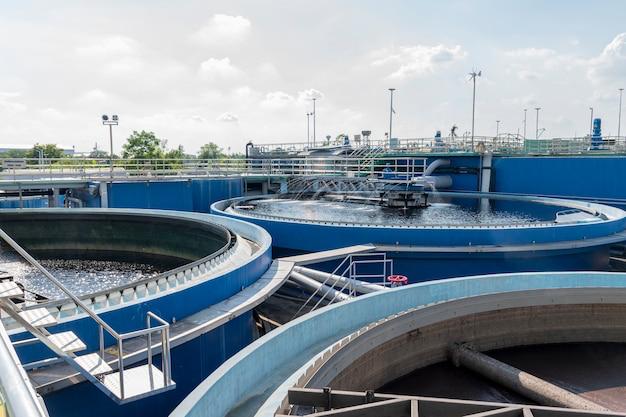
professionals. Meeting these challenges demands sustained investment, innovation, and collaboration across utilities, regulators, and the communities we serve. By addressing them headon, Florida can continue to set an example of how to provide safe, reliable, and resilient water service in a rapidly changing world.
FWEA Events
In addition to these industry-wide developments, FWEA has been hard at work engaging members through recent events that bring our community together.
Over the past few weeks, we successfully hosted the Utility Council’s Fly-In to Tallahassee, where members met with policymakers to advocate for water priorities. Our chapters also delivered impactful programming, including technical sessions on nutrient management and PFAS, as well as networking events that fostered collaboration among utilities, consultants, and regulators. These gatherings highlight the strength of our association and the commitment of our volunteers to keep knowledge-sharing at the forefront.
Looking ahead, December promises to be a busy month, with the FWEA board of directors meeting and chapter-level holiday socials, where members can celebrate the year’s successes and strengthen relationships across the state. These informal gatherings provide an important opportunity to reflect on progress and set the tone for the new year. They also remind us that community and connection are just as vital as the technical and policy work we do every day.
Next year, in January and February, we will continue to build momentum with a full slate of professional development opportunities. Plans are underway for regional seminars on water reuse and resiliency. February will also feature the annual FWEA Leadership Workshop, where chapter and committee leaders come together to align on strategy, share best practices, and build skills to better serve our members. We encourage everyone to take advantage of these upcoming events, as they embody the collaboration, learning, and leadership that define our association.
Check out the event calendar at our website (www.fwea.org) for additional event information.
As always, I welcome your questions, ideas, and collaboration on any initiatives you’re passionate about. Whether you want to discuss a column or article topic, get involved with FWEA activities, or simply connect, feel free to reach out. You can contact me anytime at fernandezji@ cdmsmith.com or at 954.882.9566. S







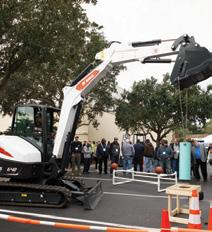

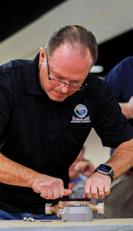
















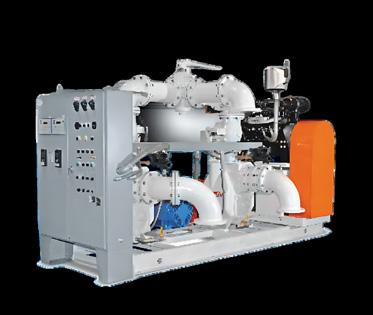
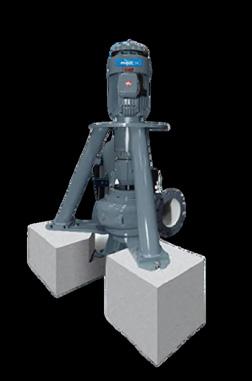
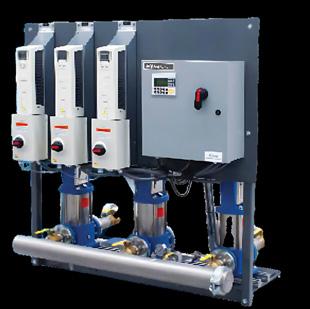



LET’S TALK SAFETY
This column addresses safety issues of interest to water and wastewater personnel, and will appear monthly in the magazine. The Journal is also interested in receiving any articles on the subject of safety that it can share with readers in the “Spotlight on Safety” column.
Quick Equipment Checks for Workers
Because of a concern for the safety of you and your family, you periodically conduct a safety inspection of your car, looking at things such as tire wear and working brake lights. You probably also inspect the smoke and carbon monoxide detectors in your house. But do you do the same type of inspection on the job?
Jobsite inspections can effectively reduce workplace accidents. Unfortunately, we usually neglect to keep a close watch for similar-type flaws in our tools and equipment that might give us an advanced warning of a hazardous condition.
For instance, fiber rope is a much used—and often abused—tool that is seldom


inspected for flaws. Fiber rope damage, wear, and strand failure often occur beneath the surface and can often only be detected by a visual inspection of unraveled strands.
Wire rope slings also require regular inspection because the first signs of failure often are not readily noticeable. A rope failure could result in a crippling injury or even death.
Checking all workplace equipment is vital to prevent serious accidents and injuries.
Daily Safety Checks
Safety checks of tools and equipment should be a regular part of the daily job routine. The inspections don’t need to be a time-consuming chore, but they need to done to maintain safety.
Here are work items you should regularly inspect:
S Tool handles. Look for splinters, splits, and loose metal parts.
S Air hose fittings. Look at their condition and security.
S Pipe wrench jaws. Are they worn out?
S Vibrating-type air tools. Look for cracks, flaws, or other failures.
S Chains used for hoisting or pulling. Look for cracks, wear, link elongation, or deformed hoods.
Machine Guarding Checklist
The Occupational Safety and Health Administration (OSHA) has developed a machine guarding checklist that can be adapted for the needs of your utility or jobsite. This checklist covers such topics as safeguards, mechanical and nonmechanical hazards, protective equipment, machinery maintenance, and electric hazards. You can customize your own list to identify areas of concern or those in need of attention or corrective action before any maintenance situation becomes an emergency.
The machine checklist verifies that safety measures, like guards and safety devices, are
present and effective, preventing contact with dangerous moving parts and new hazards. Key questions on the checklist include:
S Are guards secure and not easily removable?
S Do they protect against contact with moving parts?
S Are they compatible with safe machine operation?
S Is there a procedure for shutting down the machine before removing safeguards, and is employee training provided?
General Safeguard Requirements
Check if the safeguards provided meet the minimum OSHA requirements and have the following characteristics:
S Prevent contact. Safeguards must keep hands, arms, and other body parts from contacting dangerous moving parts.
S Be secure. Guards should be firmly attached and not easily removable.
S Ensure stability. Safeguards must prevent objects from falling into moving parts.
S Allow for safe operation. Guards should not obstruct safe, comfortable, or easy operation of the machine.
S Avoid new hazards. The guard itself should not create new, additional hazards.
S Facilitate maintenance. The guard should allow for lubrication or other maintenance without being removed.
S Include a shutdown system. There must be a system to shut down the machinery before any safeguards are removed.
Specific Hazard Areas
Consider specific areas of the machine:
S Point of operation. Is there a guard to keep the operator’s hands and body out of the point of operation, and has any tampering or removal been noticed?
S Power transmission apparatus. Are gears, sprockets, pulleys, flywheels, belts, chain drives, set screws, key ways, and collars guarded?
S Controls. Are starting and stopping controls easily reachable by the operator?
Employee Training and Procedures
Safety information is important for all employees, such as:
S Are workers trained on how to recognize machine hazards and use the safeguards?
S Is lockout/tagout training provided where necessary?
For additional information go to the OSHA checklist at www.osha.gov/ Publications/ Mach_SafeGuard/checklist. html. S
What Do You Know About Distribution Arithmetic? Test Yourself

Charlie Lee Martin Jr., Ph.D.
1. The reading of a flowmeter in gallons per minute (gpm) on a 20-inch diameter water main that is being flushed at a velocity of 6 feet per second is a. 5872 gpm. b. 5500 gpm. c. 5000 gpm. d. 6000 gpm.
2. The number of gallons needed of 5 percent sodium hypochlorite solution to disinfect a well that is 200 feet deep where there is 100 feet of water in the well with a 12-inch diameter casing and a well screen with a chlorine dose of 100 mg/l is a. 1.17 gallons. b. 1.25 gallons. c. 1.30 gallons. d. none of the above.
3. The number of gallons needed of 5.25 percent of sodium hypochlorite solution needed to disinfect 650 feet of 18-inch diameter water main with a chlorine dose of 400 mg/l is
a. 55.5 gallons. b. 60 gallons. c. 65.4 gallons. d. none of the above.
4. The number of gallons needed of 15 percent sodium hypochlorite solution to disinfect a service storage tank with a chlorine dose of 100 mg/l that is 100 feet in diameter and 10 feet deep is a. 391.5 gallons. b. 360.5 gallons. c. 380.5 gallons. d. none of the above.
5. The number of gallons of hypochlorite solution pumped by a hypochlorinator when it is held within a croc with a diameter of 3.5 feet and the solution level drops 14 inches is a. 70 gallons. b. 84 gallons. c. 79 gallons. d. none of the above.
6. The desired strength (as a percent of chlorine) of a hypochlorite solution pumped by a hypochlorinator delivering 95 gallons per day into water treated at a chlorine feed rate of 10 pounds of chlorine per day is a. 5 percent. b. 1.3 percent. c. 2 percent. d. none of the above.
7. The number of gallons of water that is to be added to 5 gallons of 12 percent hypochlorite solution to produce a 1.5 percent hypochlorite solution is a. 30 gallons. b. 20 gallons. c. 35 gallons. d. none of the above.
8. The number of gallons of water that will flow through a meter with a flow rate of 8 gallons per minute in 5 hours and 30 minutes is a. 2640 gallons.
b. 2600 gallons.
c. 2400 gallons. d. none of the above.
9. The time it will take to fill a chemical solution tank that is 5.5 feet in diameter and 6 feet deep when it is being filled at a rate of 7.5 gallons per minute is
a. 2 hours and 22 minutes
b. 2 hours and 40 minutes
c. 3 hours and 5 minites d. none of the above.
10. The accuracy of a water meter as a percentage, given that the meter reads 260 gallons per minute where the actual tested volume is 5 feet of water within a 3 feet diameter tank, is a. 88.5 percent. b. 90.5 percent. c. 98.5 percent. d. none of the above.
Answers on page 58
References used for this quiz: Formulas can be found in the appendix of CSUS Wate Distribution System Operation and Maintenance, 6th edition
Readers are welcome to submit questions or exercises on water or wastewater treatment plant operations for publication in Test Yourself. Send your question (with the answer) or your exercise (with the solution) by email to: charmartin@msn.com
Unique Findings of Piloting With Ozone, Granular Activated Carbon, and Ion Exchange in Central Florida
Zach Protas, Jon Bundy, Kathy Traexler, and Austin Humphreys
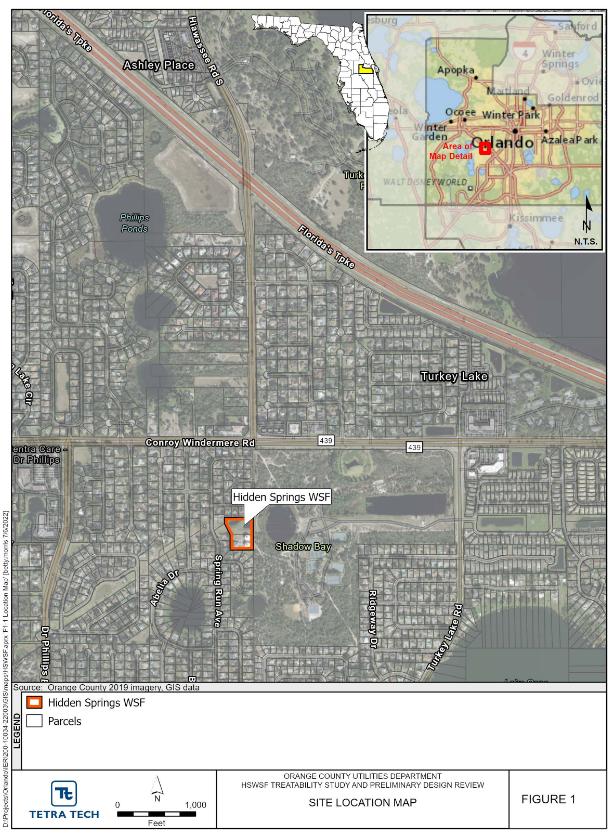
Zach Protas, P.E., is project engineer and Jon Bundy, P.E., is vice president with Tetra Tech in Orlando. Kathy Traexler, P.E., is senior engineer and Austin Humphreys is utilities section manager (southwest service area) with Orange County Utilities in Orlando.
Orange County Utilities (OCU), one of Central Florida’s largest water suppliers, is committed to providing and delivering safe and reliable drinking water to customers that meets or exceeds state and federal drinking water standards. The OCU continues to implement strategies for water conservation and alternative water supplies to protect the natural water supply while meeting the demands of the expanding central Florida population.
The OCU owns and operates the Hidden Springs Water Supply Facility (HSWSF), shown in Figure 1. The HSWSF is situated within OCU’s western service area and is permitted for a maximum demand of 8.64 mil gal per day (mgd). The OCU utilizes tray aeration and free chlorine disinfection to treat the groundwater supply before it is pumped into the distribution system.
Historically, HSWSF has experienced elevated hydrogen sulfide and total organic carbon (TOC) levels in its two groundwater production wells. Total sulfide levels in the raw water supply are higher than the existing perforated cascade tray aerators can adequately remove. To alleviate the resulting operational challenges, a pilot-scale study was conducted to assess the effectiveness of different treatment technologies and their ability to improve the finished water quality at HSWSF.
In this study, the following treatment train alternatives were evaluated:
S Ozone
S Ozone followed by granular activated carbon (GAC)
S Ozone followed by ion exchange (IX)
S Catalytic GAC
Figure 1. Site location map.
Pilot Setup and Timeline
Each of the four treatment alternatives were installed within the existing highservice pump building at HSWSF. A 5,000-gal polyethylene tank was installed outdoors to store ozonated water and provide GAC and IX with a continuous feed supply. Catalytic GAC was fed directly from the raw water supply.
The pilot study kicked off in March 2023 and operated for seven months. The pilots had different operating schedules, in which IX was operational for three months, catalytic GAC was operational for five months, and ozone and GAC ran for seven months. The GAC was operated for the longest time frame to assess the effect of biological filtration conditions. Since the GAC pilot was fed by ozonated water, the ozone pilot ran for the same testing duration.
Operational data were collected on a weekly basis for each treatment alternative during the seven-month testing period between March 2023 and October 2023. Data collection began immediately after the installation of each pilot. A minimum of three site visits per week (Monday, Wednesday, and Friday) were conducted to check on units, make necessary adjustments, and operate the ozone pilot. The ozone pilot was only run while staff members were onsite, and treated water was sent to the ozonated water storage tank. Two of the site visits (Monday and Friday) were utilized for weekly sampling events. A larger range of water quality parameters were measured every three weeks. A summary of the average water quality
Ozone-IX
Table 2. Total Organic Carbon and Sulfide Reduction Summary
Catalytic GAC
Notes:
1. Represents the cumulative bed volumes treated.
2. Represents the bed volumes treated since last backwash and regeneration.
results from the weekly and triweekly sampling events is presented in Table 1.
Results
The four treatment alternatives were analyzed to determine their capability to remove hydrogen sulfide, reduce TOC concentrations, and lower the resulting disinfection byproduct (DBP) formation
potential. The TOC and sulfide reductions are summarized in Table 2. Ozone treatment provided 100 percent total sulfide removal. Catalytic GAC initially provided 100 percent sulfide removal, but after further operation, its sulfide reduction decreased rapidly. Catalytic GAC’s TOC removal capabilities were less than the other alternatives. Both IX and GAC were effective at reducing TOC concentrations and
Continued on page 42

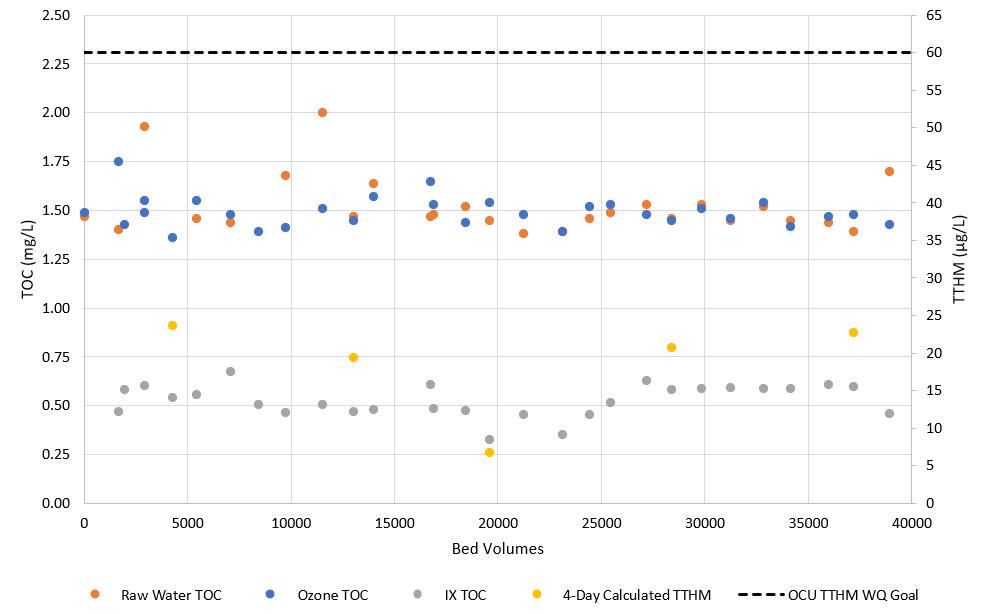

subsequent four-day DBP formation potentials below OCU’s goal of 60 µg/L.
Performance curves for GAC, IX, and catalytic GAC were developed. These curves compare the raw water, ozone, and respective treatment’s TOC levels to total trihalomethane (TTHM) formation potentials of the treated water collected throughout the study. As demonstrated in Figures 2 and 3, GAC and IX treatment were successful in reducing subsequent TTHM formations below OCU’s water quality goal for the duration of testing. Figure 4 presents that catalytic GAC performance was lower than other alternatives and produced an effluent water with TTHM formation potentials above 80 µg/L.
Cost Analysis
A comparison of the relative costs is presented in Table 3, which provides both capital and operation and maintenance costs for the full-scale treatment equipment. For GAC, catalytic GAC, and IX, an additional vessel to the firm quantity was added to the cost to provide redundancy.
Challenges Encountered
While conducting this pilot study, several operational challenges were encountered.
Intermittent Raw Water Supply
Ozone and catalytic GAC pilots were fed off the existing raw water main to the ground storage tanks. Raw water was only available when the wells were operational; therefore, supervisory control and data acquisition integration was necessary to operate the catalytic GAC pilot automatically. A relay was added to the catalytic GAC feed pump, and solenoid valves were added to control flow to the pilot unit while wells were in operation.
Providing a Consistent Oxygen Supply for Catalytic Granular Activated Carbon
To oxidize sulfide, catalytic GAC media must have an adequate dissolved oxygen supply (~2 mg dissolved oxygen per mg total sulfide). An oil-free air compressor assembly was added to the feed water line and oxygen injection was achieved by using an aeration stone connected to the feed piping. A needle valve was used to control the flow of oxygen.
Microbial Growth on Catalytic Granular Activated Carbon Media
The air supply to the catalytic GAC media created an abundant amount of microbial
Figure 2. Granular activated carbon performance graph.
Figure 3. Ion exchange performance graph.
growth on the catalytic GAC media, resulting in frequent backwashing. The compressor’s air flow was reduced to prevent the formation of bacteria, which slowed its development, but did not eliminate its presence. Growth was believed to be sulfur-oxidizing bacteria; however, samples were not sent to a laboratory for further analysis.
Algal Growth in Ozonated Water Storage Tank
Upon startup, the ozonated water storage tank was placed outside the high-service pump building in direct sunlight; algae began to form rapidly in the tank as it sat there. To alleviate growth, using an algaecide or disinfectant was considered, but not implemented since it would not mirror full-scale operation. Ultimately, the tank was relocated to a shaded portion of the site and wrapped in an ultraviolet-resistant vinyl coating. Algae were not present for the remainder of the study.
Summary
The following conclusions and recommendations are based on the pilot-scale study, which provided a basis for evaluation of the alternatives on their ability to remove total sulfide and TOC and subsequent control of DBP formation potential.
Historical Water System Data Analysis
S Throughout the duration of the study, raw water TOC levels averaged 1.70 mg/L.
S Raw water total sulfide levels averaged 2.94 mg/L throughout the study and have the potential to result in significant to very significant impacts without additional total sulfide removal, as noted in Section 62555.315(5)(a) FAC.
Ozone
S Ozone treatment was demonstrated to be effective at removing 100 percent of total sulfide present in raw water.
S Ozone treatment was shown to increase biodegradable dissolved organic carbon, resulting in more-effective biological carbon removal of downstream processes.
S Ozonation did not reduce DBP formation potential below OCU’s goal.
Ozone-Granular Activated Carbon Treatment
S The GAC was demonstrated as a reliable adsorption media, effectively removing TOC and reducing DBP formation. After reaching biological mode, the media was still effective at reducing TOC.

Figure 4. Catalytic granular activated carbon performance graph.
Table 3. Cost Analysis Summary
S The GAC pilot treated approximately 26,000 bed volumes during operation and produced water meeting OCU’s goals. At average plant flow, the life of GAC media may exceed one year of operation if biological conditions are maintained during that time frame. If designed for 4.32 mgd, a full-scale GAC system will treat approximately 32,000 bed volumes over the course of a year.
S When assessing the 20-year present worth, Ozone-GAC (ozone sized for 8.64 mgd and GAC sized for 4.32 mgd) was moderately less expensive (less than 9 percent) compared to Ozone-IX. This assumes a media changeout every 50,000 bed volumes for GAC and 200,000 bed volumes for IX. The pilot study was run for 26,000 bed volumes and demonstrated effective TOC removal; however, the study was not conducted long enough to assess the entire life of each respective media, and changeout frequencies are estimated.
Ozone-Ion Exchange Treatment
S The IX effectively reduced TOC concentrations and subsequent DBP formation potentials below OCU’s goal. The media produced consistent water quality throughout the study’s duration.
S When evaluating the 20-year present worth, Ozone-IX was relatively more costly (less than 9 percent) compared to Ozone-GAC.
Catalytic Granular Activated Carbon Treatment
S After 5,000 bed volumes, catalytic GAC experienced rapid breakthrough of sulfide and TOC. Initially, total sulfide was completely removed, but removal rates were lower as the study progressed.
S Catalytic GAC demonstrated effective TOC removal, but at lower effectiveness than GAC and IX processes.
S On a capital cost basis, catalytic GAC was the lowest cost option (sized for 8.64 mgd); however, considering the annual operations and maintenance costs, it was the most expensive treatment alternative.
Conclusions
The OCU currently has one water treatment plant utilizing ozone treatment and several other facilities that may benefit from ozonation, GAC, IX, or a combination of processes. To determine the most effective solution at each facility, it is recommended that a pilot is implemented to test and evaluate different treatment methods. Each pilot system presents a series of unique operational challenges and the results and lessons learned from piloting help provide insight into the benefits and potential challenges associated with different types of treatment.
Successful piloting efforts yield valuable insights into treatment performance, enhance understanding of the factors necessary for full-scale design, offer an assessment of operational feasibility, and highlight potential cost implications. While piloting can be a significant upfront cost, it helps contribute to a well-informed, feasible, and cost-effective fullscale solution. S


FWEA CHAPTER CORNER
Welcome to the FWEA Chapter Corner! The Member Relations Committee of the Florida Water EnvironmentvAssociation hosts this article to celebrate the success of recent association chapter activities and inform members of upcoming events. To have information included for your chapter, send details to Melody Gonzalez at gonzalezm@bv.com.

Gonzalez

Spread the Word!
2026 Florida Water Environment Association Video Contest

Samar Al Mashrafi and Debbie Sponsler
The 2026 Florida Water Environment Association (FWEA) Video Contest is now open and looking for creative Florida middle- and high-school students (grades 6–12) to submit short, family-friendly videos that educate the public on what should and should not be flushed in our toilets. Entries may be skits, animations, news reports, or other original formats, as long as they clearly convey the “Do Not Flush” message and meet all content and length requirements.
All entries are due Feb. 6, 2026.
Entries are open to individuals or teams up to four students. Participants can find the official rules and entry form on the contest page at www.fwea.org/video_contest.php and must submit their video as a YouTube link.
Prizes are awarded to teachers and students!
S Prizes for teachers range from $200 to $500
S They range from $350 to $450 for middle-school students
S High-school students can win $350 to $550
The FWEA encourages teachers to make the contest a class assignment, which has proven highly successful in past years, boosting student participation. It can fit easily into science, media, or environmental curricula, and give students a real-world audience for their work. An independent panel will judge creativity, technical quality, and the clarity of each video’s message.
Starting with a pilot program in one community in 2017, the video contest has grown to a statewide annual contest with entries submitted from across Florida. To view the creative 2025 winning entries, visit the FWEA video contest website at www.fwea.org/video_contest.php.
For more information, please contact Samar Al Mashrafi at Samar. AlMashrafi@arcadis.com.
Samar Al Mashrafi is staff water engineer at Arcadis in Tampa. Debbie Sponsler is the communications section manager at Orange County Utilities in Orlando. S
Melody


The Power of 300: How FSAWWA Volunteers Lead Beyond Our Borders

WLisa Wilson-Davis Chair, FSAWWA
hen people think of the Florida Section of the American Water Works Association (FSAWWA), they often picture events such as our Annual Fall Conference (and the now-famous
BBQ Challenge), student competitions, workshops, or legislative fly-ins. But what truly sets FSAWWA apart is the way our members step up to serve beyond Florida, at the national American Water Works Association (AWWA) level.
I was amazed to learn that more than 300 of our FSAWWA members are actively volunteering for the association. They are more than just names on a roster; they are Floridians lending their knowledge, creativity, and leadership to shape the local, national, and international water community.

National Service, Local Pride
Our FSAWWA members hold positions on:
S Committees and subcommittees shaping technical standards, operator training, and research priorities.
S Joint task groups and ad hoc committees addressing emerging challenges, such as per- and polyfluoroalkyl substances (PFAS), potable reuse, and cybersecurity.
S Awards committees, councils, and the AWWA board of directors recognizing excellence and guiding the association’s direction.
S Student chapters and technical advisory work groups mentoring the next generation of water professionals.
Together, our Florida members represent 643 active positions within AWWA’s volunteer framework, spanning operators, engineers, utility managers, students, consultants, academics, and regulators. Their extraordinary level of engagement ensures Florida’s perspectives, expertise, and advancements are part of the dialogue shaping water’s future everywhere.
Recognition for Outstanding Service
While I would love to list the names of all 300 of our association-level volunteers and the 643 roles they fulfill, that would make this the longest article in FWRJ history. Instead, l am highlighting two groups whose contributions deserve special recognition (see sidebar).
What makes this especially inspiring is that many of these “super volunteers” who serve at the association level also lead within the Florida Section, doubling their impact across both spheres of influence.
Why It Matters
This national service is about influence. It ensures Florida’s unique challenges and innovations, from nutrient reduction to infrastructure resiliency, are part of the national dialogue. And when our members contribute to drafting standards, evaluating research, or steering governance, they are helping to shape water policy and practice for communities across North America and the world.
A Call to Action
Our volunteers prove that Florida’s impact is felt well beyond our borders. If you’ve ever thought about joining them at the association level, now is the time. Visit the newly redesigned AWWA website (www. awwa.org) to explore the opportunities to serve and learn more.
Opportunities exist across a broad spectrum:
S More than 250 committees where you can share your expertise and learn from others.
S Six councils that provide leadership and shape AWWA’s overall direction, including Technical and Educational, Public Affairs, and Standards.
S Over 70 standards committees dedicated to developing and maintaining the technical standards that utilities and communities around the world rely on.
S Awards committees, student chapters, and task groups that connect professionals of all levels and advance recognition, innovation, and outreach.
With AWWA and FSAWWA, there is a place where your voice, skills, and perspective can make a difference. Volunteering is more than giving time; it’s about shaping our water industry while gaining professional growth, mentorship, and lifelong connections.
Because when Florida volunteers, the entire water community benefits.
Closing Thought
To our 300 FSAWWA members serving in 643 association roles today: thank you for elevating our section and our entire
profession. To those holding multiple roles or serving in leadership capacities, your example shows what it means to go above and beyond, both in Florida and across AWWA.
And to those who may be considering getting involved, know this: The water profession needs your voice, too! S

Volunteer
Florida Leading the Way
Florida’s “Super Volunteers”
These volunteers have seven or more association-level roles:
• Anthony R. Holmes, P.E. – Jones Edmunds
• Heather M. Ripley, P.E. – Kimley-Horn
• Dr. Frederick Bloetscher, P.E. – Public Utility Management & Planning Services Inc.
• Dr. Bina Nayak – Pinellas County Utilities
• Dr. Rajendra Vaidya, P.E. – Woodard & Curran
• Andrew Burnham – Stantec Consulting Services Inc.
• Katherine A. Alfredo – University of South Florida
• Robert Ryall – Arcadis
• Jorge T. Aguinaldo – Bechtel Energy Inc.
• Bryan A. Mantz, CMC, CGFM – GovRates Inc.
Florida Members on AWWA Board and Councils
These volunteers serve on the association’s board of directors and various councils:
• Richard T. Anderson – Peace River Manasota Regional Water Supply Authority AWWA Board of Directors – section director
• Anthony R. Holmes, P.E., Jones Edmunds Standards Council – member-at-large
• Greg Ramon Standards Council – vice-chair
• Pranjali Kumar – Carollo Engineers Inc. Public Affairs Council – young professionals liaison
• Andrew Burnham – Stantec Consulting Services Inc. Technical and Educational Council – Manufacturers Division representative
• Heather M. Ripley, P.E. – Kimley-Horn Technical and Educational Council – Distribution and Plant Operations Division representative

Drifting Isn’t a Strategy: 8 Steps to Stay on Course in Turbulent Times
Maartje van Krieken
The storm isn’t coming—it’s already here—and many leaders are realizing they’re sailing without instruments. The current business climate is a storm of volatility, uncertainty, complexity, and ambiguity. Strategic plans are outdated overnight. Decision-making feels like a risk. And yet—standing still isn’t an option. Leaders are under pressure to keep moving, while everything keeps shapeshifting. If you’re feeling rudderless, you’re are not alone, research shows that:

years, historical performance data, and negotiated delivery times. Today, however, you don’t have the level of control over your world for these tools to still facilitate progress.
To make it through this storm, leaders need more than motivation, they need navigation, because after this one, there will be another—and another.
The Chaos Compass Defined
Identify Your Nearest Safe Haven
If the storm worsens, where do you go? Determine if you can stabilize while operating, or if you need to carve out space to regroup. How long could you afford a holding pattern based on liquidity and current contracts if needed? Can you pause noncritical activity and create the bandwidth to work current priorities and think ahead?
Reclarify the Destination
S Two-thirds of executives struggle to make decisions fast enough during volatile times.
S 70 percent of business transformations fail, often due to misalignment, unclear direction, and thinking that was “in the old world.”
S Half of leaders admit to delaying decisions when markets become unstable.
Here’s the dilemma: when chaos hits, everyone is working hard, but without coordinated direction. The energy is real and the effort is sincere, but there are only limited results to show for it. Conventional business management practices are largely geared toward maintaining steady operations, or planned projects, changes, or growth. Planning cycles are driven by calendar
That’s where the Chaos Compass comes in, providing framework to help leaders regain grip, restore clarity, and move forward in alignment. Business, like sailing, has situations in which doing nothing is unthinkable, even disastrous. Taking the decision-making mechanics and people dynamics tools and practices from the nautical world and translating them for use in a business context is the key to success in a volatile time.
The Chaos Compass does precisely that, and here are its eight elements.
Get Your Bearings
Start with situational awareness. Map out what you know and don’t know inside and outside your organization. Involve a wide variety of people to create trust and buy-in, and get those perspectives from the angles you don’t see yourself. Where are the bottlenecks, disconnects, gaps, and opportunities?

Is your original goal still valid? Has success been redefined? Do you need some near-term or interim short-term targets so your team has direction and urgency without false certainty? Redundancy in communication is going to help you iron out ambiguity, misalignment, and identify where your definition or boundaries need sharpening. Clarity directs energy.
Diagnose
the Big Levers
Focus on the two to four areas to invest time and resources to get you and your organization back on track toward success. Focus is key to success in turmoil, so deprioritize distractions and noncritical tasks to free up capacity and “noise” in the system. Make sure the interdependencies between these efforts are identified and resourced.
Decision-Making Mechanics
Good and fast decision making is facilitated by deploying frameworks that are simple, fit for purpose, and therefore, not complex to implement. You need the clarity on the “who,” “what,” “how,” and “why now” the structure provides to ensure that the actual effort and energy can go into making the best possible decisions based on data and risks.
Empower People
It’s time to empower your people to “get on with it,” with clarity on destination, priorities, and the mechanics and boundaries in place; then, the redirection of effort becomes automatic. Strive to delegate down to the lowest practical level for expediency. Remember that task assignments may need to deviate from the current organization chart.
Reliable Tools and Data
Ensure your people, partners, and
leadership are equipped with access to the right resources to do their work, but more is not always better. Performance data, decision logs, and communication plans ensure your tools are relevant, real-time, and responsive.
Execute and Adapt
Don’t bow out before the finish line; execute plans until the intended outcomes have been achieved, yet reassess your environment regularly. If the winds change, your course should, too. Agility doesn’t mean random, it means responsive. The need to course-correct is not a sign of failure, but a sign of your business resilience in its pursuit of progress.
Staying Afloat
To be successful in the current climate there is no sense in waiting for clarity or the storm to pass; you cannot afford to do so when the next one is already forming. You don’t need calmer weather to lead; you need rhythm, direction, and the willingness to move while things are still swirling.
With the right navigation system, businesses can make smarter and faster decisions under pressure, align teams behind shared goals, and start building resilience—not just surviving chaos, but strengthening through it.
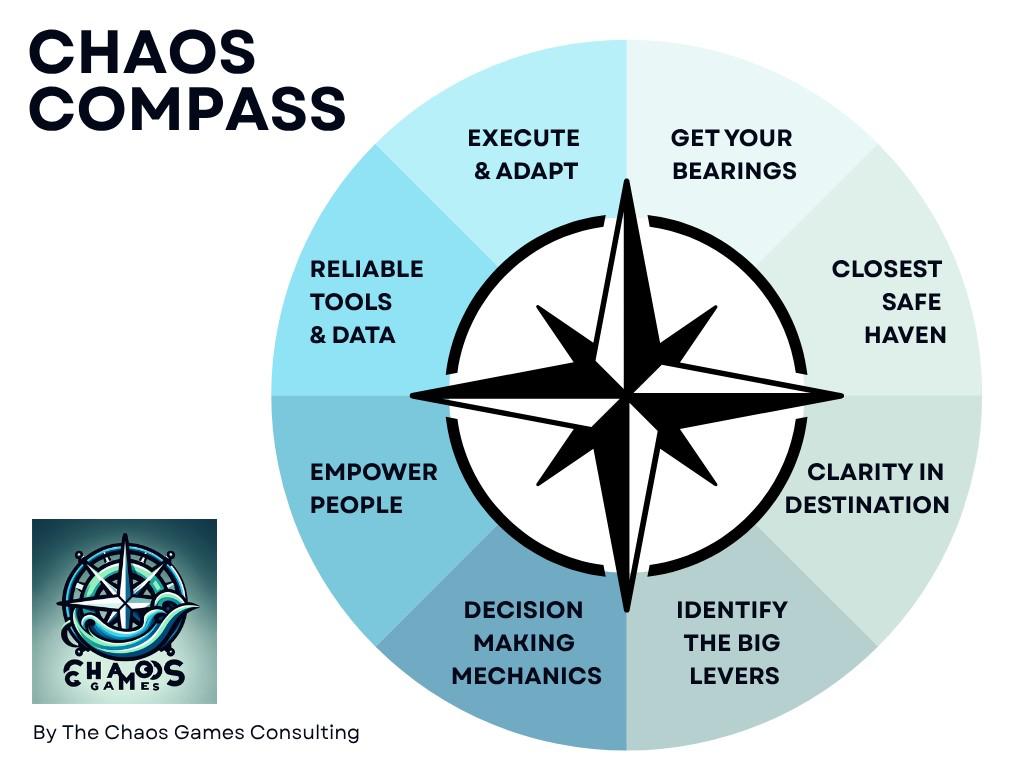
Maartje van Krieken is the founder of “The Chaos Games Consulting” and host of “The Business Emergency Room” podcast. An international speaker, business triage expert, accredited coach, and former frontier oil and gas leader, she equips executives and
leadership teams with tools to navigate chaos, drive decisions, and lead through volatility by unlocking powerful people dynamics with her infectious energy and decades of global experience. Learn more at www.thechaosgamesconsulting.com. S
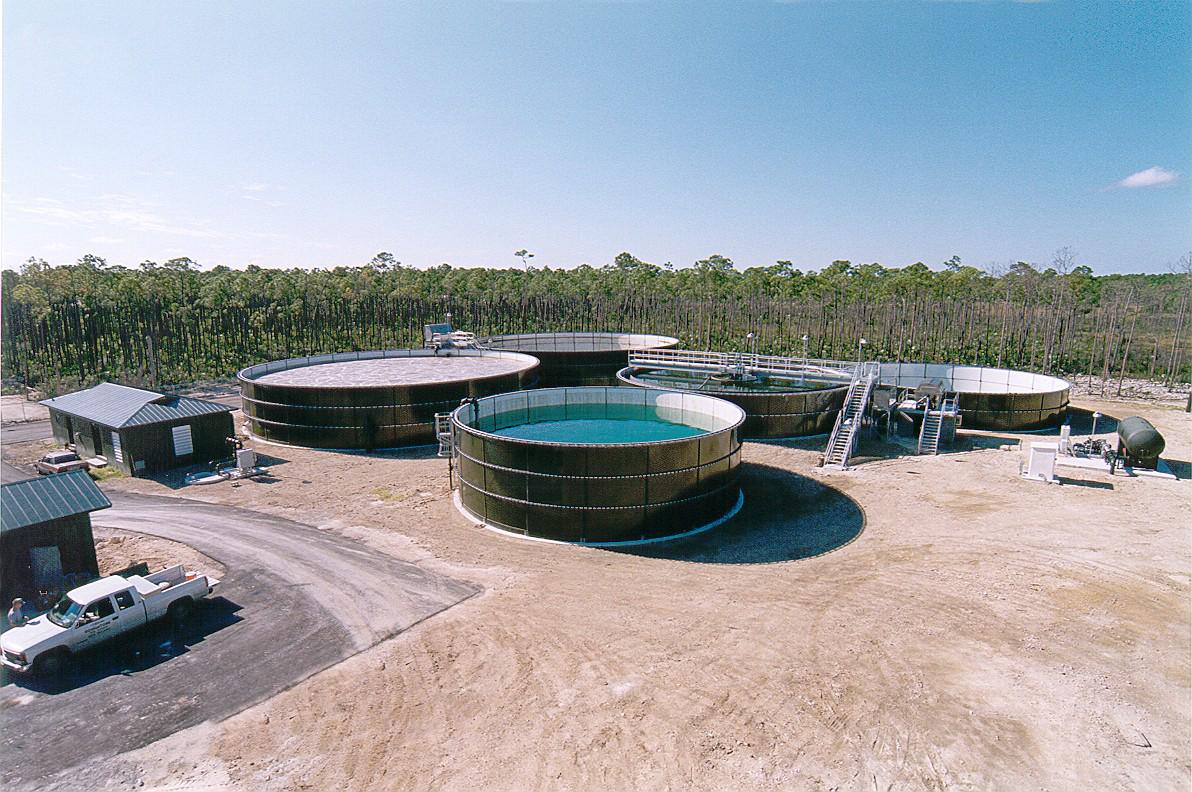
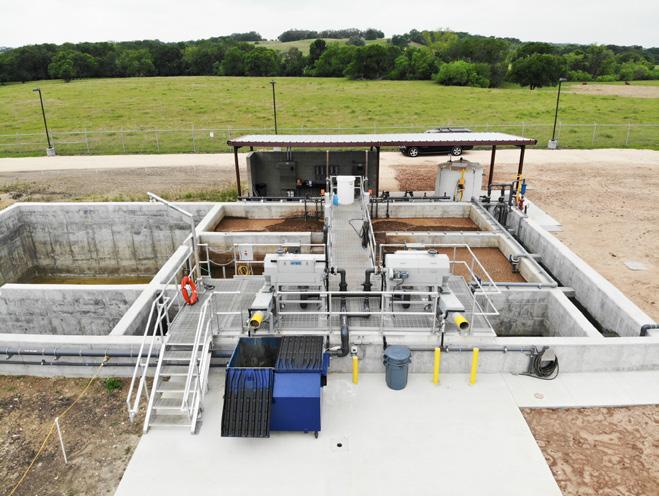

2026-2027 AWWA Scholarships Now Open!


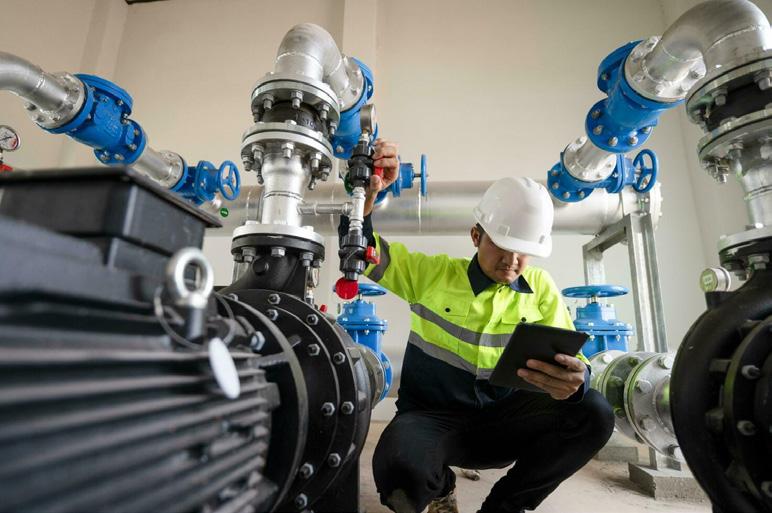
Are you, or a student you know, passionate about water? Interested in the environment? Then join the thousands of water professionals dedicated to protecting water—the world’s most vital resource.
The American Water Works Association (AWWA) is offering scholarships to help future water leaders launch their careers in science, technology, engineering, and math (STEM). This is your chance to make a lasting impact in critical fields such as civil engineering and environmental science.
Apply
now! Deadline: Dec. 20, 2025
Who Should Apply?
Students pursuing degrees in fields such as: Civil Engineering
S Environmental Engineering
S Agricultural or Bio Systems Engineering
Environmental and Natural Science
S Hydrology
S Surface Water Hydrology
S Watershed Management
Environmental Science
S Soil Science
S Water Quality
S Land Use Impacts
Marine Sciences
S Marine Biology
S Oceanography
S Marine Ecology
Scholarships can be used for tuition, books, laboratory fees and equipment, and conference registrations; they cannot be used for a stipend, per diem, or rent. Some scholarships allow for the purchase of a computer or office furniture; however, those purchases are subject to income tax per the Internal Revenue Service.
You need to be a permanent resident of the United States, Mexico, or Canada to apply for a scholarship, but you do not need to be an AWWA member to apply.
Notification of awards will occur in March 2026.
As a scholarship recipient you can make a difference in the worldwide water community. For more information reach out to the Water Equation Team at scholarships@awwa.org. S

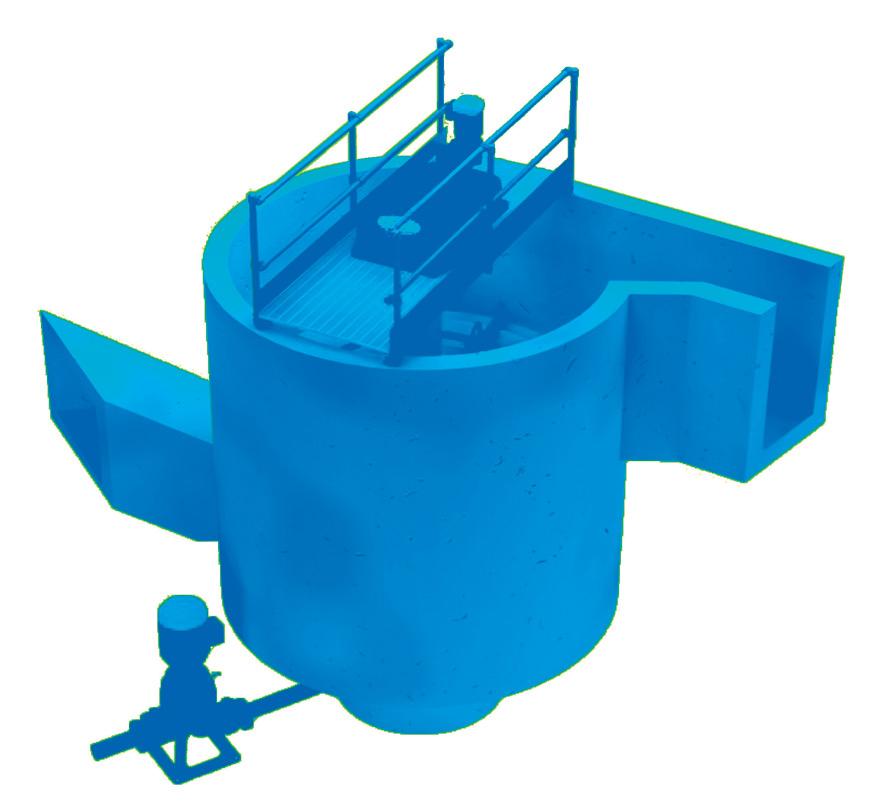

YOUR PROJECTS DON
NEITHER DO WE.
Ajax Rentals is your trusted environmental monitoring partner for reliable gear, fast turnaround, and local support t roug every stage of your project, it teams across exas and our ne lorida office
Explore rental options near you.



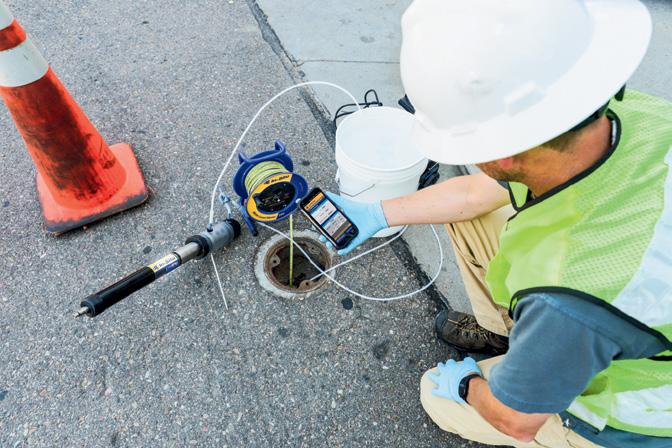

UPCOMING 2026 CLASSES

CLASSIFIED ADVERTISING RATES - Classified ads are $22 per line for a 60 character line (including spaces and punctuation), $60 minimum. The price includes publication in both the magazine and our Web site. Short positions wanted ads are run one time for no charge and are subject to editing. ads@fwrj.com
POSITIONS AVAILABLE
City of Belleview –Crew Leader
$56,180.80 – 86,819.20 DOQ
https://www.governmentjobs.com/careers/belleviewfl
City of Belleview – Utilities Technician
$38,022.40 – 58,760.00 DOQ
https://www.governmentjobs.com/careers/belleviewfl
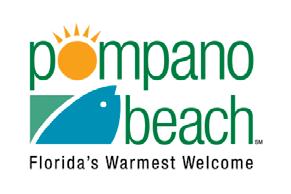
Utilities Plans Examiner Coordinator
$70,245 - $108,725/yr.
Utilities Treatment Plants Mechanic I
$49,418 - $69,536/yr.
Utilities Lift Station Operator II
$57,208 - $80,496/yr.
Apply Online At: http://pompanobeachfl.gov Open until filled.
POLK COUNTY BOARD OF COUNTY COMMISSIONERS:
UTILITIES DIVISION -- 3 POSITIONS AVAILABLE
UTILITIES WATER PLANT OPERATOR (WPO) OPERATOR I TRAINEE, I, II, & III –
$22.38HR - $32.45HR. Water Operator I
$24.66HR - $35.77HR Water Operator II
$27.19HR - $40.79HR Water Operator III
Hourly, Nonexempt.
See BOCC Link Careers | Polk County Jobs | polk-county.net
Engineer I, II, III: $82,670 - $110,045 Annually
Performs professional engineering work coordinating, planning, developing, drafting, reviewing, inspecting, and managing assigned water, wastewater, and reclaimed water projects.
REQUIREMENTS: Bachelor’s or Master’s degree in, Environmental Engineering or Civil Engineering from an Accredited Board of Engineering and Technology (ABET) accredited college or university.
Engineer III: Five (5) years of professional experience in engineering related to water and wastewater and which includes two (2) years of post-registration experience.
Engineer II: Five (5) years of experience in engineering related to water and wastewater.
Engineer I: A Board of Professional Engineers (BPE) Certification as an Engineer Intern (EI) or Engineer in Training (EIT) is preferred.
Apply at https://career8.successfactors.com/career?company=brevardcou

NOW HIRING! Water & Wastewater Positions
• Utilities Director
• Operations Manager
• Utilities Maintenance Supervisor
• Chief Operator
• Lift Station Operator
• Plant Operator I -II
• Utilities Field Technician I

Apply Online Today! -www.davie-fl.gov
The Tampa Water Department has announced the successful completion of a major infrastructure upgrade at the nearly 100-year-old David L. Tippin Water Treatment Facility. This $93 million project marks a significant milestone in modernizing Tampa’s water treatment and distribution systems to meet the needs of tomorrow.
“This is a major step forward in ensuring Tampa’s continued access to clean, high-quality drinking water,” said Mayor Jane Castor. “The City of Tampa knows a good foundation to a thriving city starts with strong infrastructure.”
Project highlights include:
• New high-service pump station. The facility’s new high-service pump station is equipped with eight 900-horsepower high-service pumps. These pumps are essential to delivering clean drinking water across the department’s 220-square-mile service area.
• Upgrades to disinfection process. A newly constructed chlorine contact basin enhances the plant’s disinfection capabilities and helps extend the shelf life of the treated water throughout the distribution system.
• Improved water storage. A newly built center clearwell and upgrades to the existing clearwell system have significantly improved usable water storage capacity and operational efficiency.
The pump station is one of several infrastructure improvements taking place at the water treatment facility. The department is making these strategic improvements with the goal of increasing efficiency, improving reliability, and ensuring the quality of the drinking water for decades to come.
This infrastructure investment is possible thanks to PIPES (Progressive Infrastructure Planning to Ensure Sustainability), a $2.9 billion dollar funding plan for large-scale sewer and water infrastructure improvements.
R
CDM Smith has reached key project milestones on its integrated progressive designbuild effort to expand the central and south advanced wastewater treatment facilities (AWWTFs) and advance the surface water discharge elimination program for the City of Fort Myers. With the design phase for the AWWTFs now 60 percent complete, the city has contracted CDM Smith for construction on the $150 million project.
The project aims to secure more reclaimed water for public access use and eliminate discharge of treated wastewater into the Caloosahatchee River. As the central and south AWWTF both near full capacity, the expansion is crucial to sustain the growing population of the city and meet water service demands. This project will increase the reclaimed system capacity at the two
NEWS BEAT
AWWTFs from 18 to 72 mgd by adding filtration and high-level disinfectant for tertiary treatment. Once complete, the two facilities will have enough capacity to support the city’s demand for wastewater treatment, beneficial reuse, and disposal through 2040.
“The City of Fort Myers surface water discharge elimination project is a transformative milestone that honors our commitment to protecting Florida’s waterways and communities,” said Justin Saarinen, principal and client service leader at CDM Smith. “Through high-value, innovative engineering and construction, we’re setting a new benchmark for sustainable infrastructure in the region.”
R
The Florida Department of Environmental Protection (FDEP) has announced that Gov. Ron DeSantis and the Florida Cabinet have approved the protection of 20,086 acres of critical conservation lands, representing a $167.25 million investment in Florida’s natural resources. Six of the properties are within the Florida Wildlife Corridor and another will expand the Cary State Forest in Duval County.
“These approvals protect more than 20,000 acres of Florida’s most important landscapes,” said Alexis A. Lambert, FDEP secretary. “By conserving these lands, we are preserving clean water, safeguarding wildlife, and ensuring future generations can experience the Florida we know and love.”
Two conservation easements and one acquisition totaling 13,375 acres within the Caloosahatchee Big Cypress Corridor in Collier and Hendry counties will enhance connectivity with the Florida Panther National Wildlife Refuge, Big Cypress National Preserve, and Dinner Island Wildlife Management Area. These properties provide critical habitat for imperiled species such as the Florida panther, while supporting agricultural operations. A 3,094-acre conservation easement within the Little Orange Creek Corridor Florida Forever Project in Putnam County serves as a key connection within the Ocala-to-Osceola Wildlife Corridor, protecting habitat for rare and imperiled species. The landowner is actively restoring degraded hardwood forest and encroached sandhill, while safeguarding wetlands that help preserve the water quality of Little Orange Creek, a tributary of Orange Creek.
A 1,670-acre conservation easement within the Bar-B Ranch Florida Forever Project in Martin County is located adjacent to the C-44 Stormwater Treatment Area and was identified for acquisition as part of the Indian River Lagoon-South project, a key component of the Comprehensive Everglades Restoration Plan. This working cattle ranch supports shallow water
storage and regional water quality improvements that benefit the St. Lucie Estuary, the Indian River Lagoon, and ultimately, the Everglades ecosystem
A 1,400-acre conservation easement within the Big Bend Swamp/Holopaw Ranch Florida Forever Project in Osceola County will help link conservation lands between Bull Creek and the Three Lakes Wildlife Management Area. This working cattle ranch maintains a wildlife crossing under the Florida Turnpike, ensuring safe passage for animals and maintaining landscape connectivity. It also contributes to aquifer recharge and protects water flow into the Kissimmee-Okeechobee-Everglades system.
A 543-acre acquisition within the Northeast Florida Timberlands and Watershed Reserve Florida Forever Project in Duval County will protect habitat for species, such as the gopher tortoise, while restoring water quality in the Lower St. Johns River Basin. This parcel, previously approved for residential development, will be managed by the Florida Forest Service as part of Cary State Forest, expanding public outdoor recreation opportunities.
A 4-acre acquisition in Okaloosa County will expand the City of Destin’s Norriego Point Beach Access and Park. The property will enhance public access by connecting the park to Gulf Shore Drive and increasing beachfront access, parking, and opportunities for boating, fishing, and swimming. The parcel will be managed by Okaloosa County in partnership with the City of Destin.
Also approved was the acquisition of permanent agricultural land conservation easements over more than 10,000 acres of working agricultural lands through the Florida Department of Agriculture and Consumer Services Rural and Family Lands Protection Program R
The Annual Water Summit of the National Association of Water Companies (NAWC) was held September 29 through October 1 in Aventura, gathering together water utilities, solution providers, policymakers, regulators, consumer advocates, support industries, and other related professionals.
The summit celebrated 130 years of NAWC, which, through its member companies, safeguards public health and promotes environmental stewardship, serving the water and wastewater needs of nearly 40 million Americans every day.
The gathering, which included a vendor hall, provided attendees with the chance to engage with a variety of expert speakers and panelists focused on the future of the water and wastewater industries. Every year, it’s an opportunity to join industry professionals from throughout the United States to take a leading role and drive the conversations around water and wastewater. S
January
March
May
June
July
August
September..........Emerging
October
November...........Water
December
Technical articles are usually scheduled several months in advance and are due 60 days before the issue month (for example, January 1 for the March issue).
The closing date for display ad and directory card reservations, notices, announcements, upcoming events, and everything else including classified ads, is 30 days before the issue month (for example, September 1 for the October issue).
For further information on submittal requirements, guidelines for writers, advertising rates and conditions, and ad dimensions, as well as the most recent notices, announcements, and classified advertisements, go to www.fwrj.com or call 352-241-6006.
Test Yourself Answer Key
Continued from page 39
1. A) 5872 gpm.
The reading of a flowmeter in gallons per minute on a 20-inch diameter water main that is being flushed at a velocity of 6 feet per second is 5872 gpm.
2. A) 1.17 gallons.
The number of gallons needed of 5 percent sodium hypochlorite solution to disinfect a well that is 200 feet deep where there is 100 feet of water in the well with a 12-inch diameter casing and a well screen with a chlorine dose of 100 mg/l is 1.17 gallons.
3. C) 65.4 gallons.
The number of gallons needed of 5.25 percent of sodium hypochlorite solution needed to disinfect 650 feet of 18-inch diameter water main with a chlorine dose of 400 mg/l is 65.4 gallons.
4. A) 391.5 gallons.
The number of gallons needed of 15 percent sodium hypochlorite solution to disinfect a service storage tank with a chlorine dose of 100 mg/l that is 100 feet in diameter and 10 feet deep is 391.5 gallons.
5. B) 84 gallons.
The number of gallons of hypochlorite solution pumped by a hypochlorinator when it is held within a croc with a diameter of 3.5 feet and the solution level drops 14 inches is 84 gallons.
6. B) 1.3 percent.
The desired strength (as a percent of chlorine) of a hypochlorite solution pumped by a hypochlorinator delivering 95 gallons per day into water treated at a chlorine feed rate of 10 pounds of chlorine per day is 1.3 percent.
7. C) 35 gallons.
The number of gallons of water that is to be added to 5 gallons of 12 percent hypochlorite solution to produce a 1.5 percent hypochlorite solution is 35 gallons.
8. A) 2640 gallons.
The number of gallons of water that will flow through a meter with a flow rate of 8 gallons per minute in 5 hours and 30 minutes is 2640 gallons.
9. A) 2 hours and 22 minutes. The time it will take to fill a chemical solution tank that is 5.5 feet in diameter and 6 feet deep when it is being filled at a rate of 7.5 gallons per minute is 2 hours and 22 minutes.
10. C) 98.5 percent.
The accuracy of a water meter as a percentage, given that the meter reads 260 gallons per minute where the actual tested volume is 5 feet of water within a 3 feet diameter tank, is 98.5 percent.
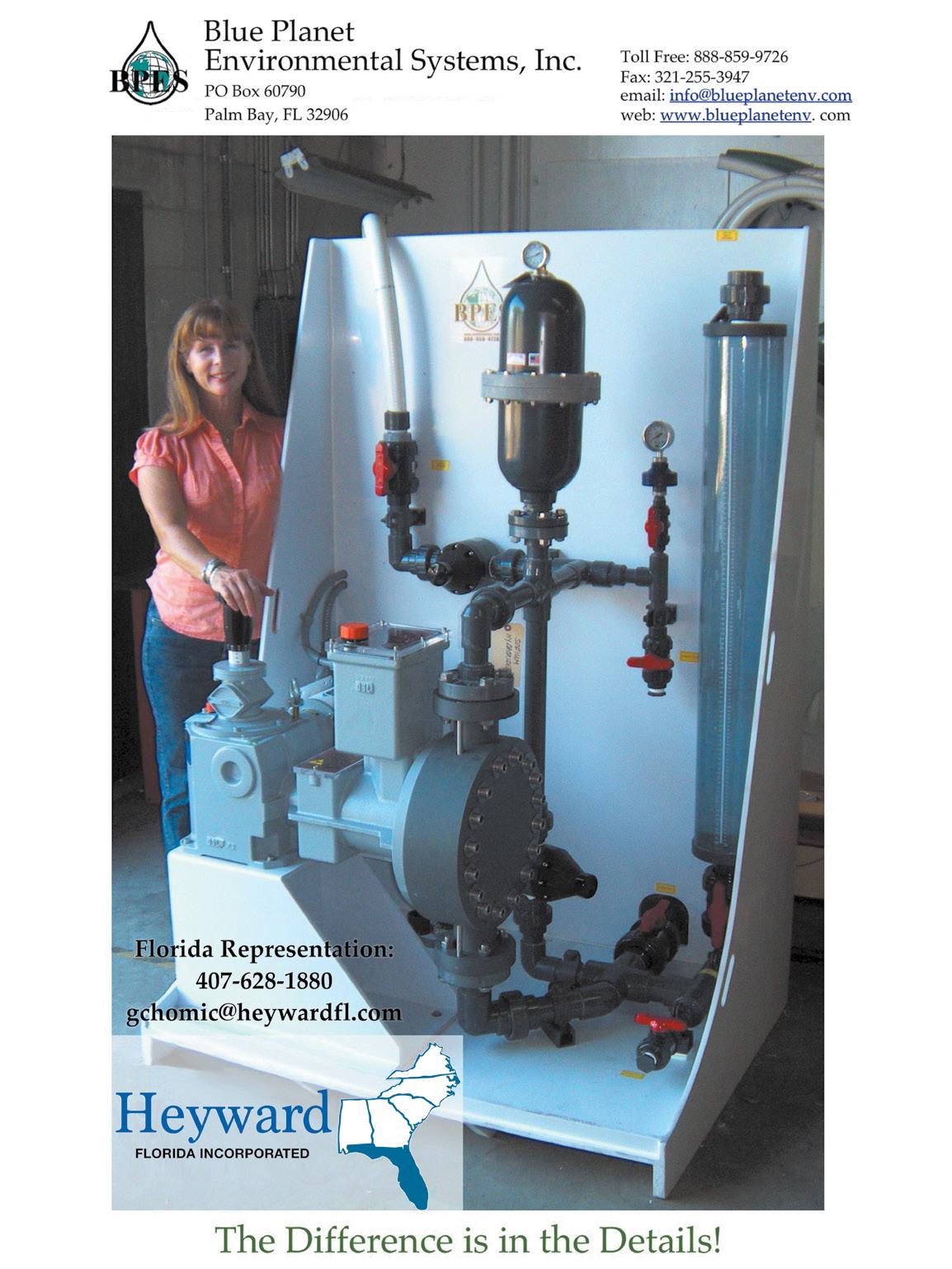
Superior Quality, Unmatched Efficiency with
ZEEWEED* ULTRAFILTRATION



Why Veolia’s ZeeWeed Technology is the Smart Choice:
• UF barrier produces high-quality drinking water
• Removes suspended solids, bacteria and viruses
• Extremely compact plant footprint
• Proven performance in all types of water sources
• Produces an ideal RO feedwater
• Fully automated operation that requires minimal chemical addition
• High-efficiency design lowers lifecycle costs
*Trademark of Veolia; may be registered in one or more countries. ©2025 Veolia. All rights
